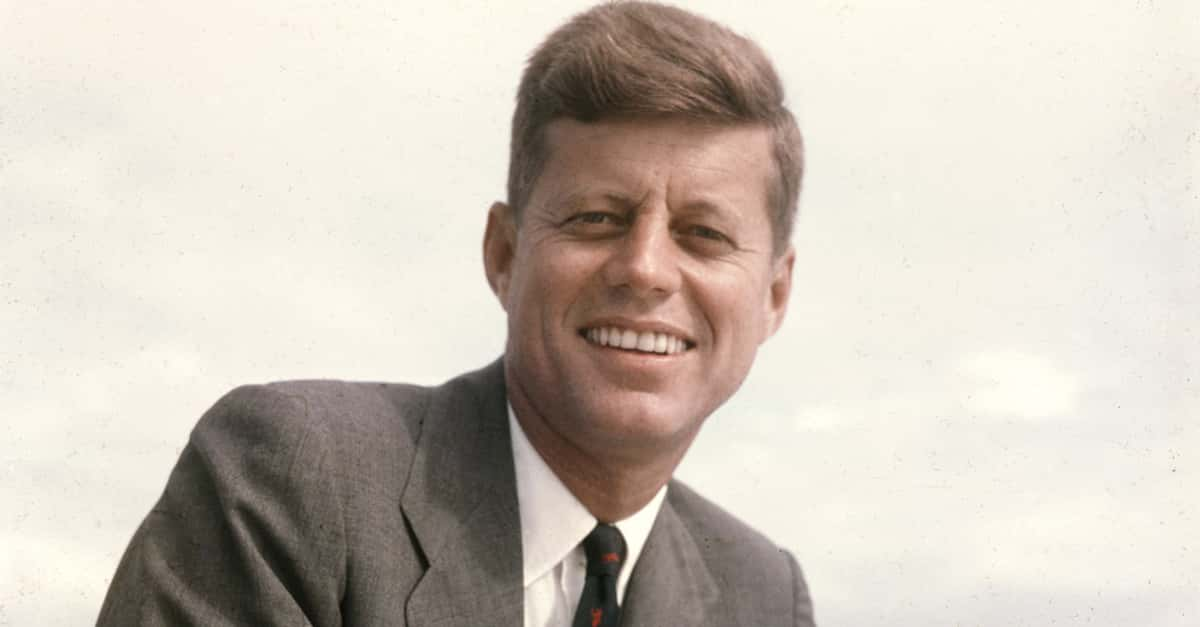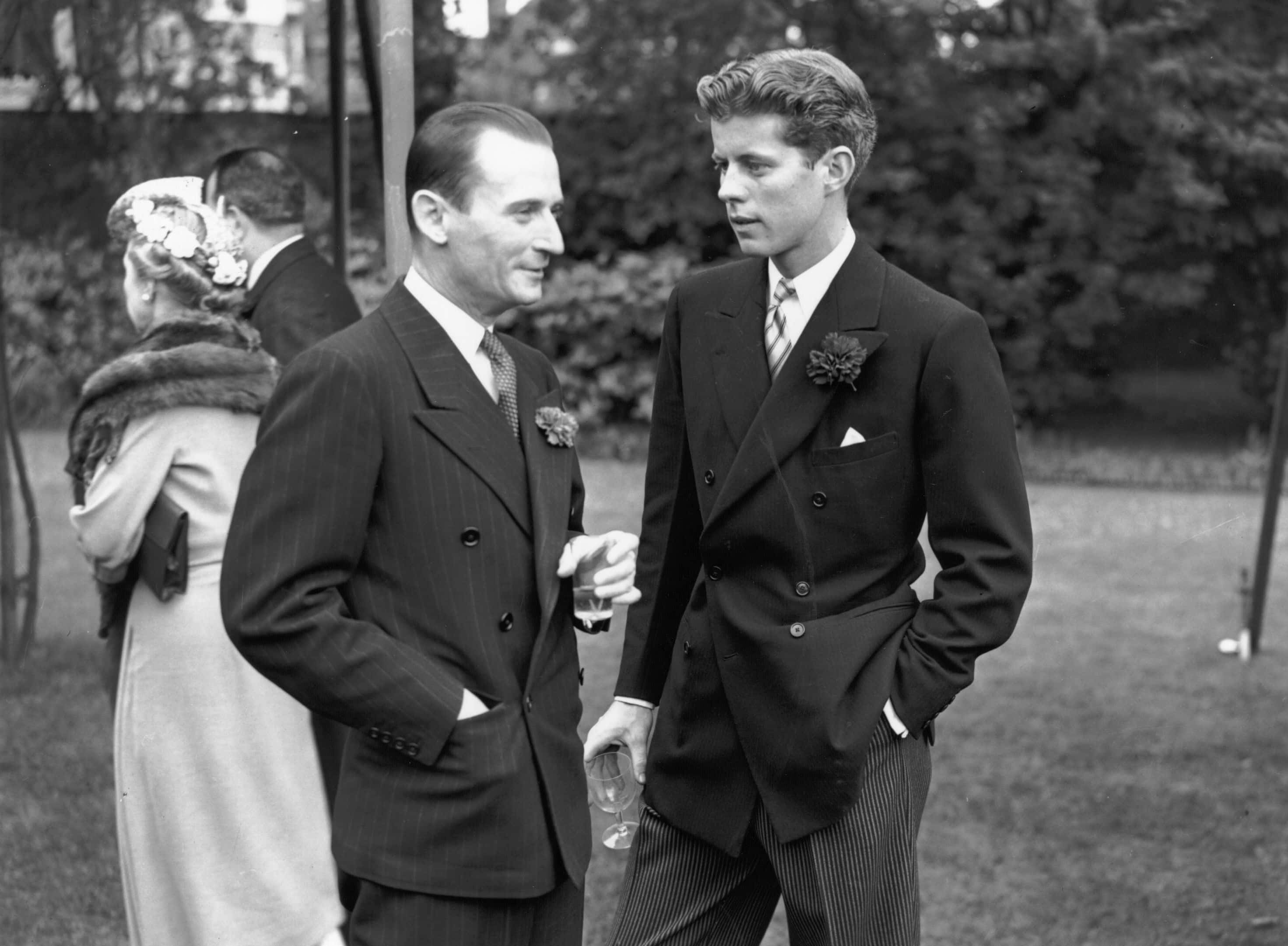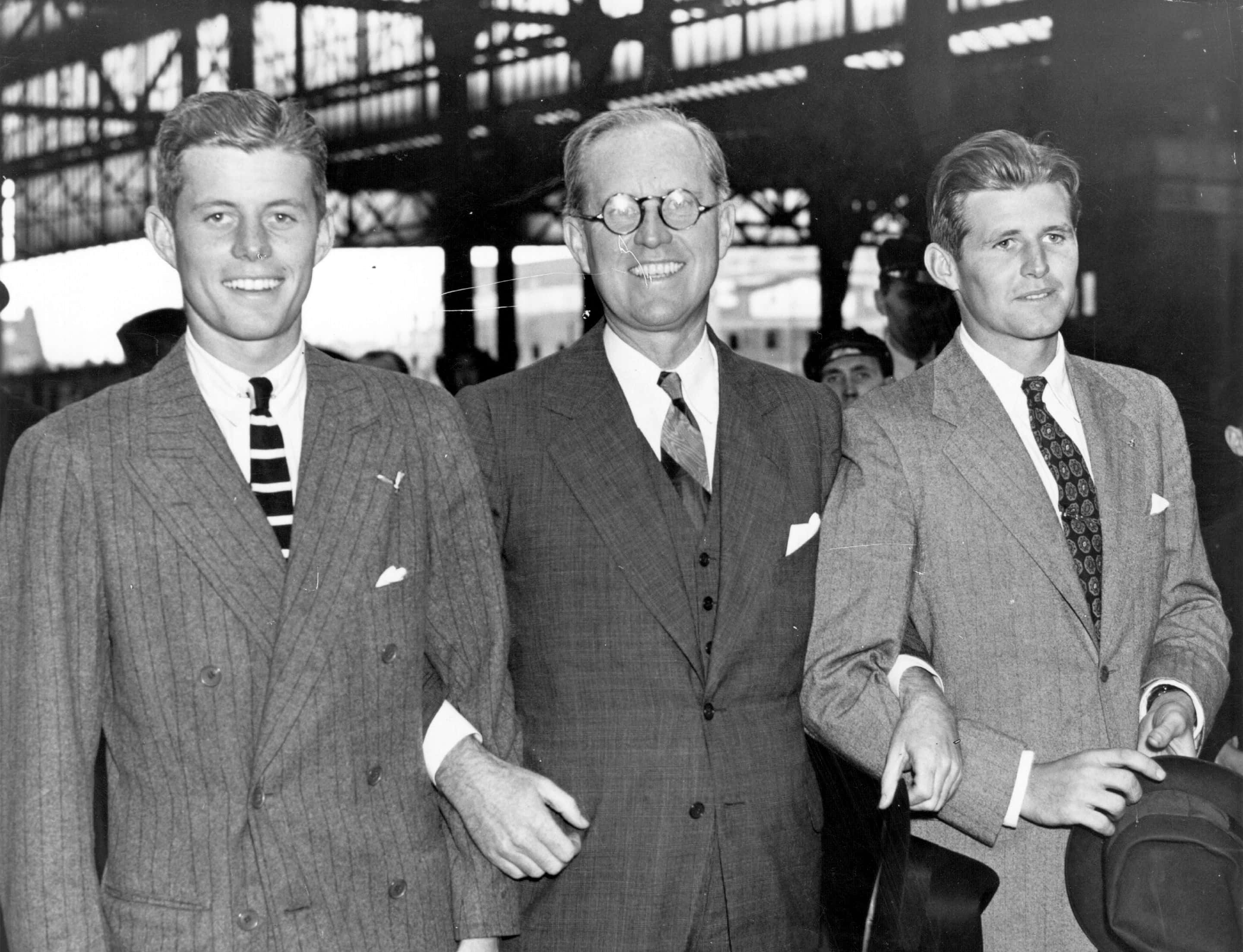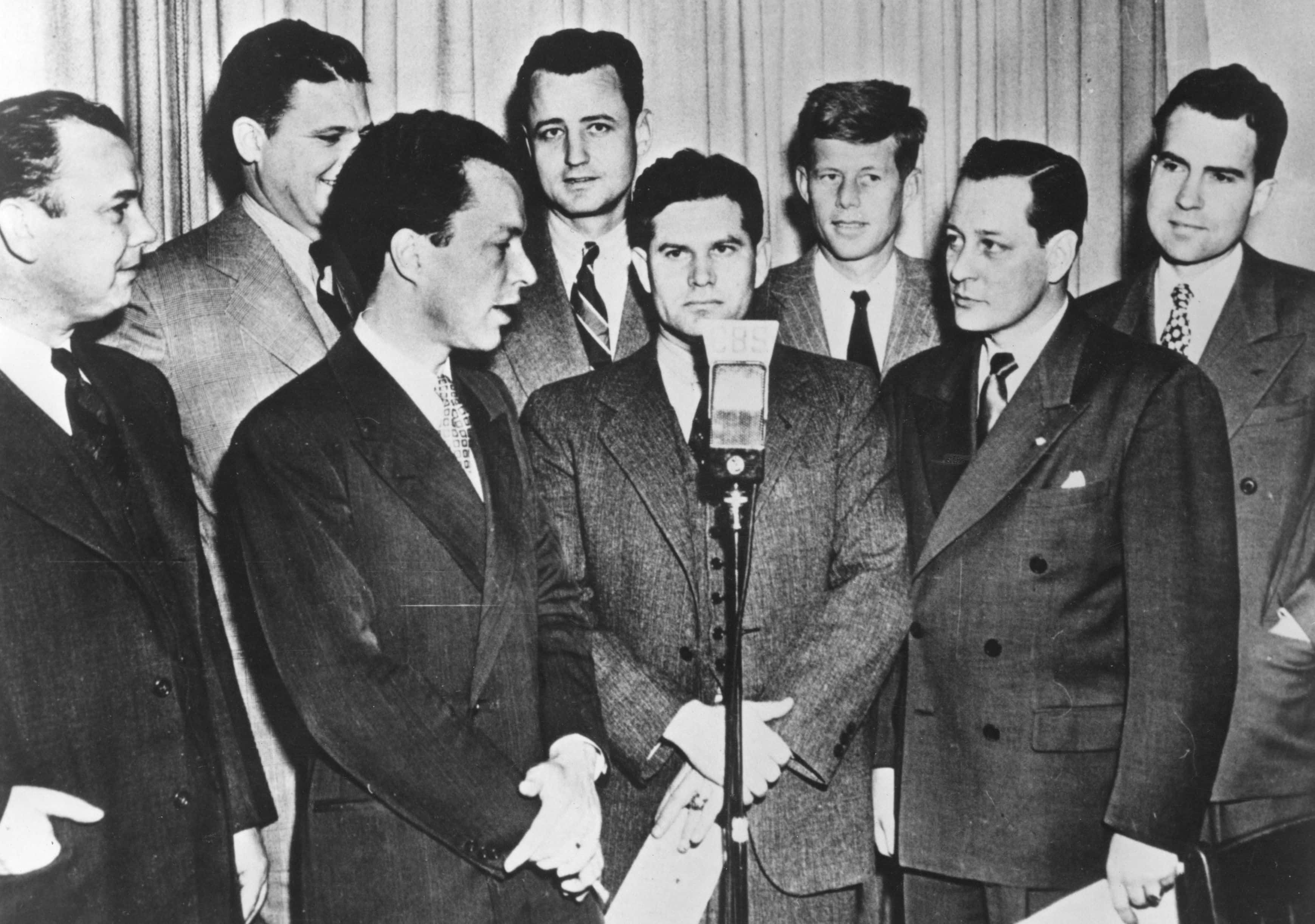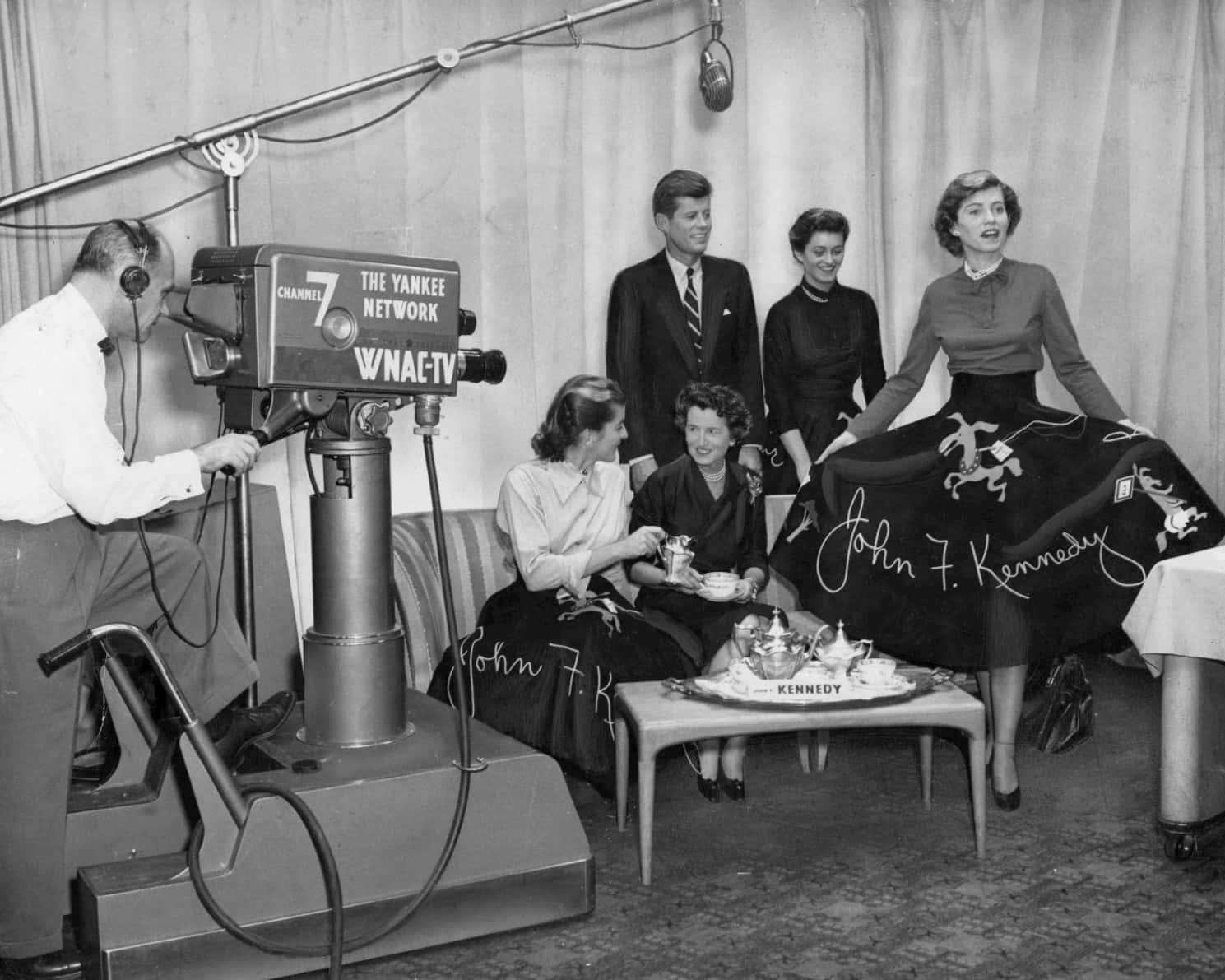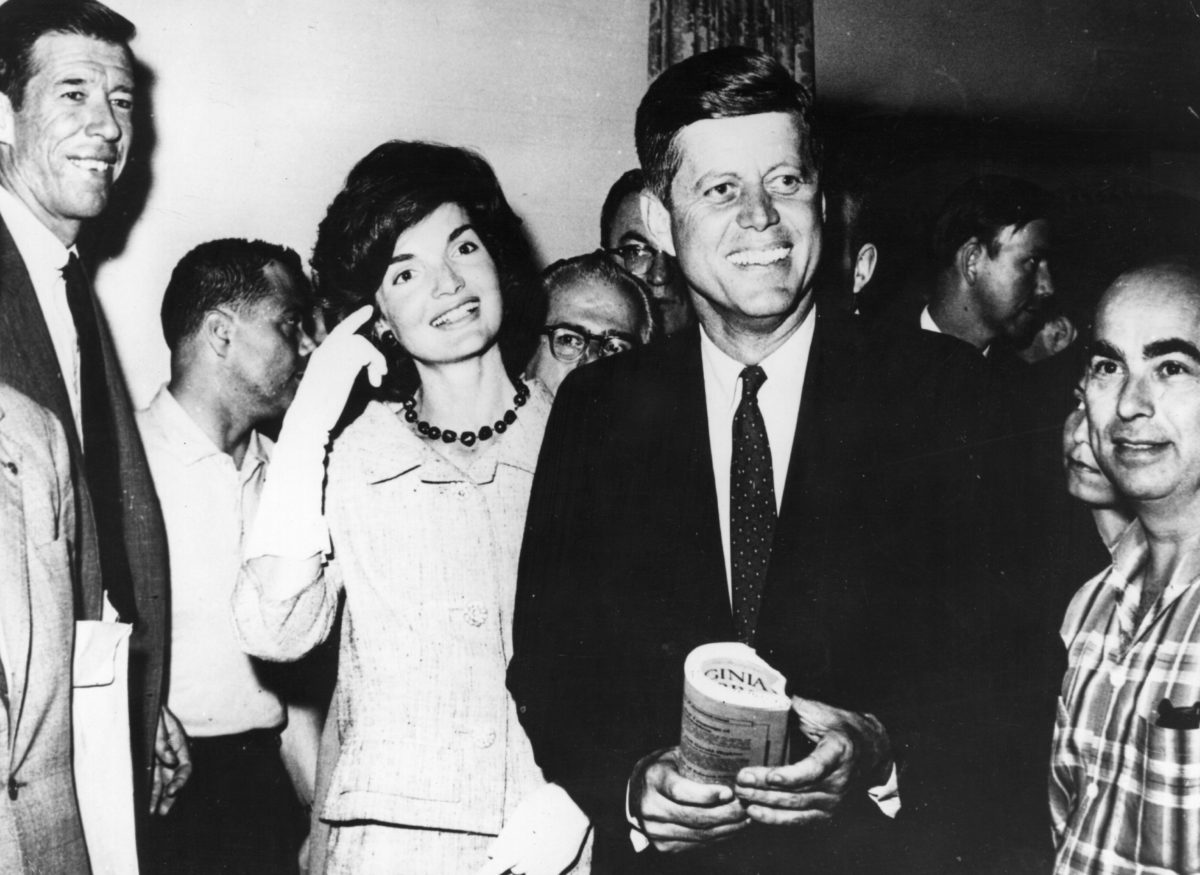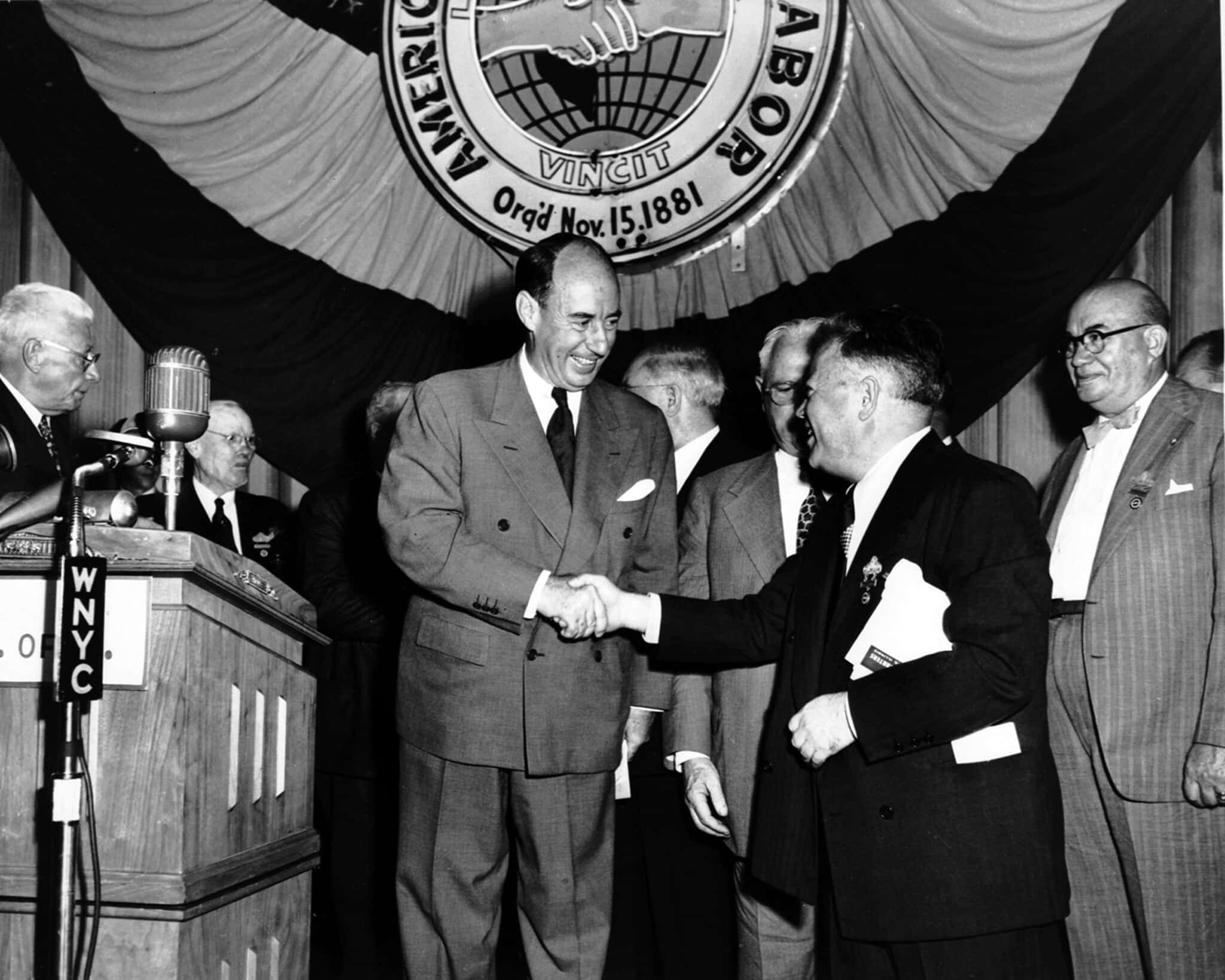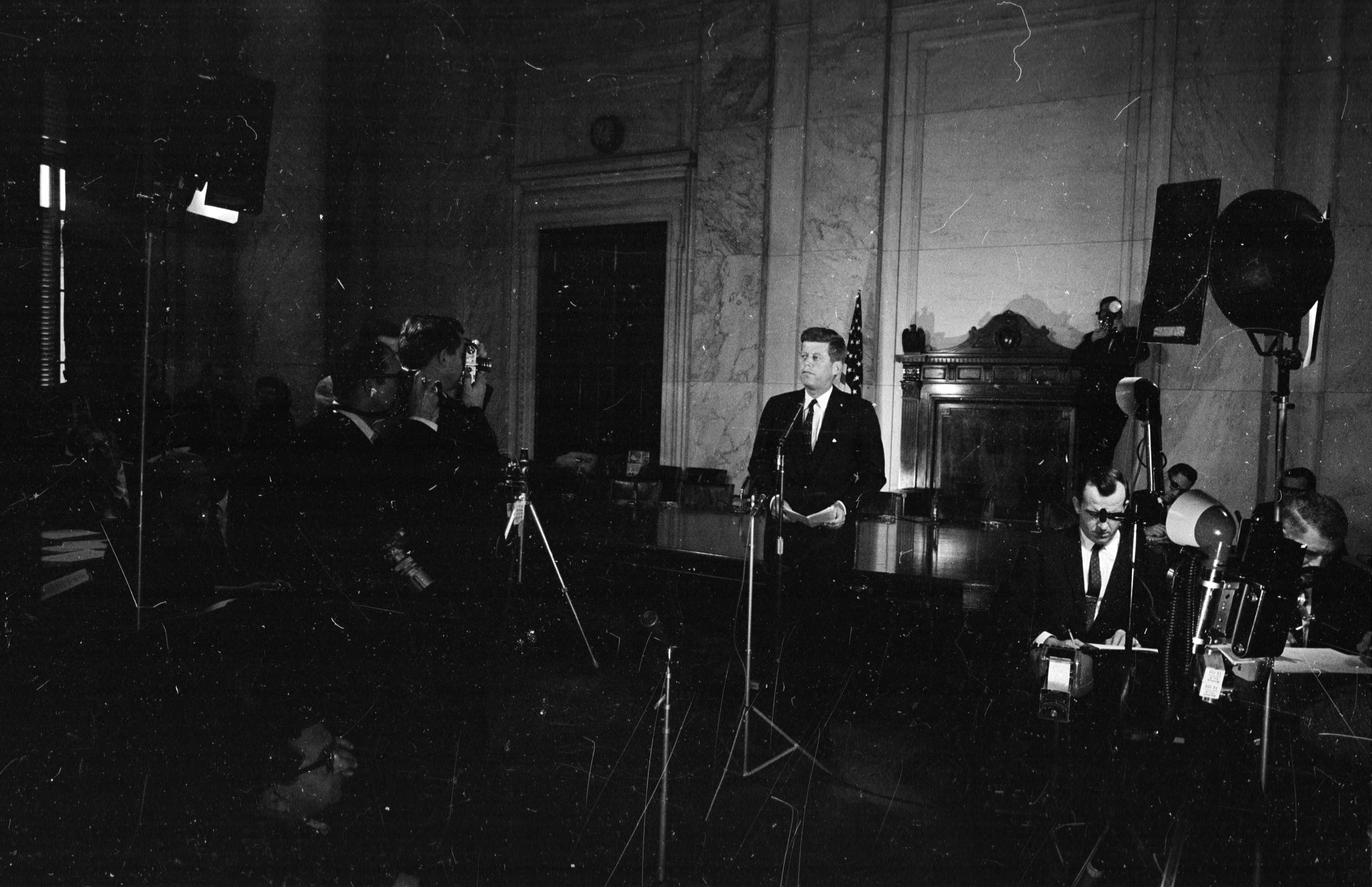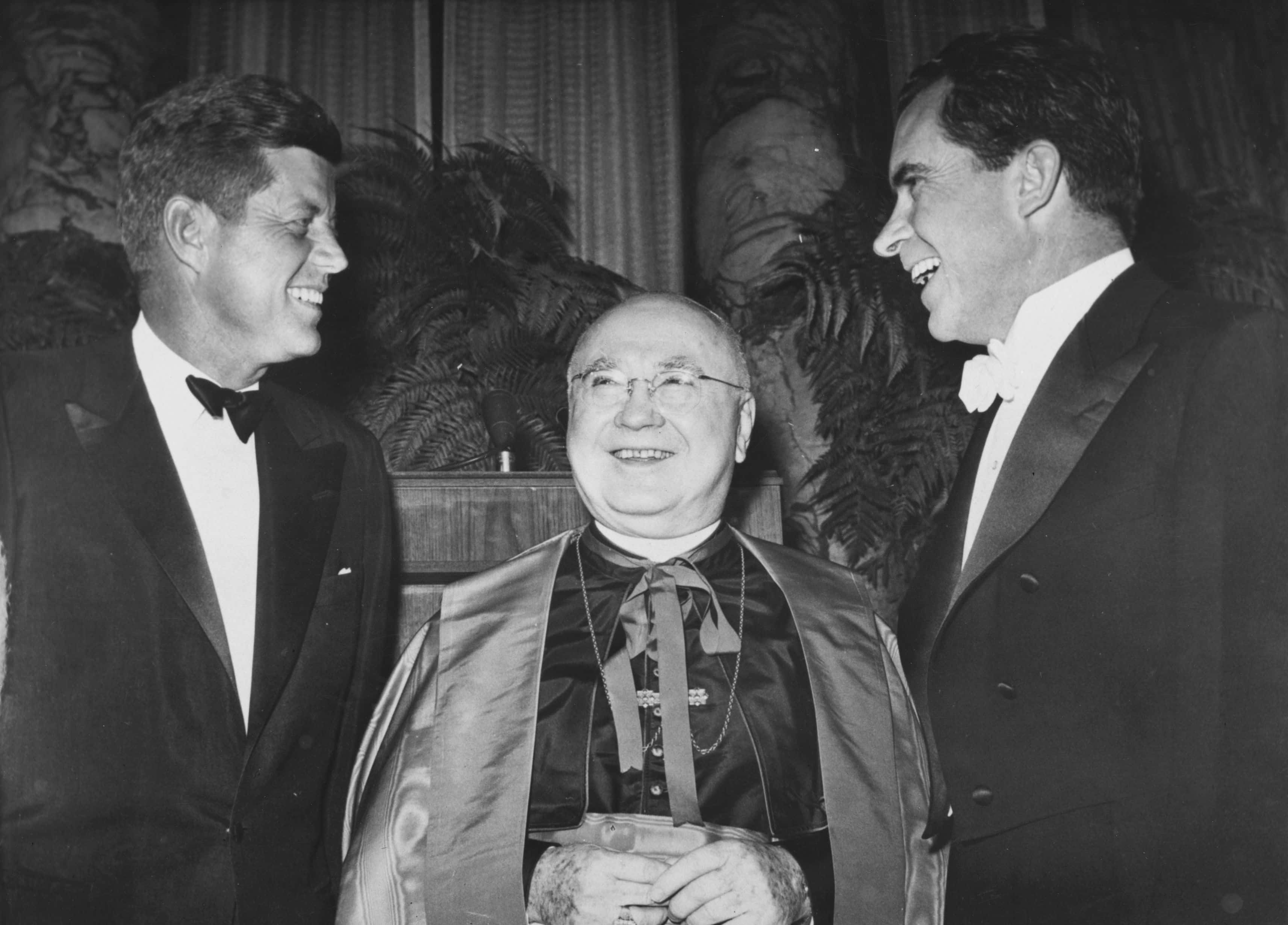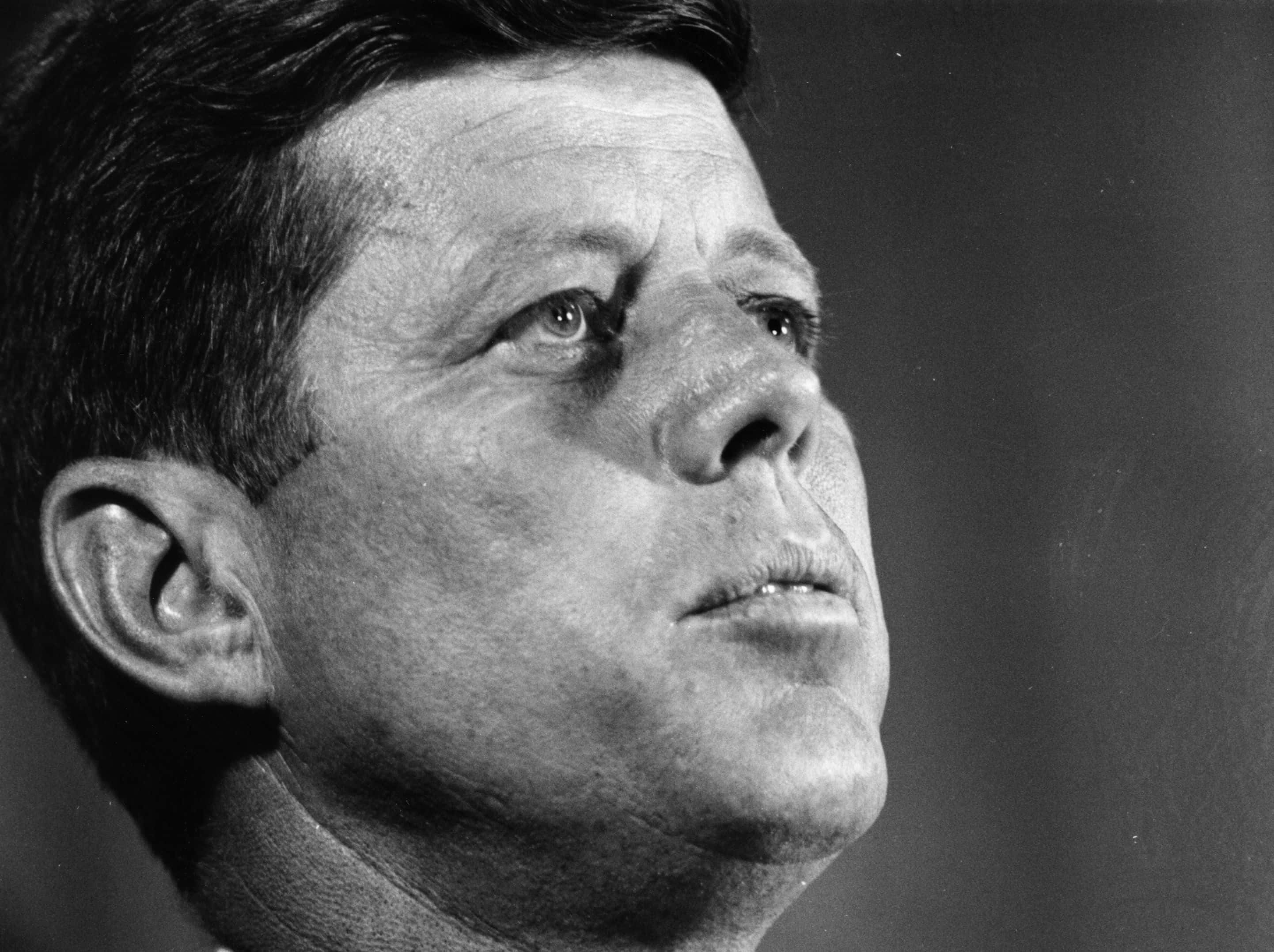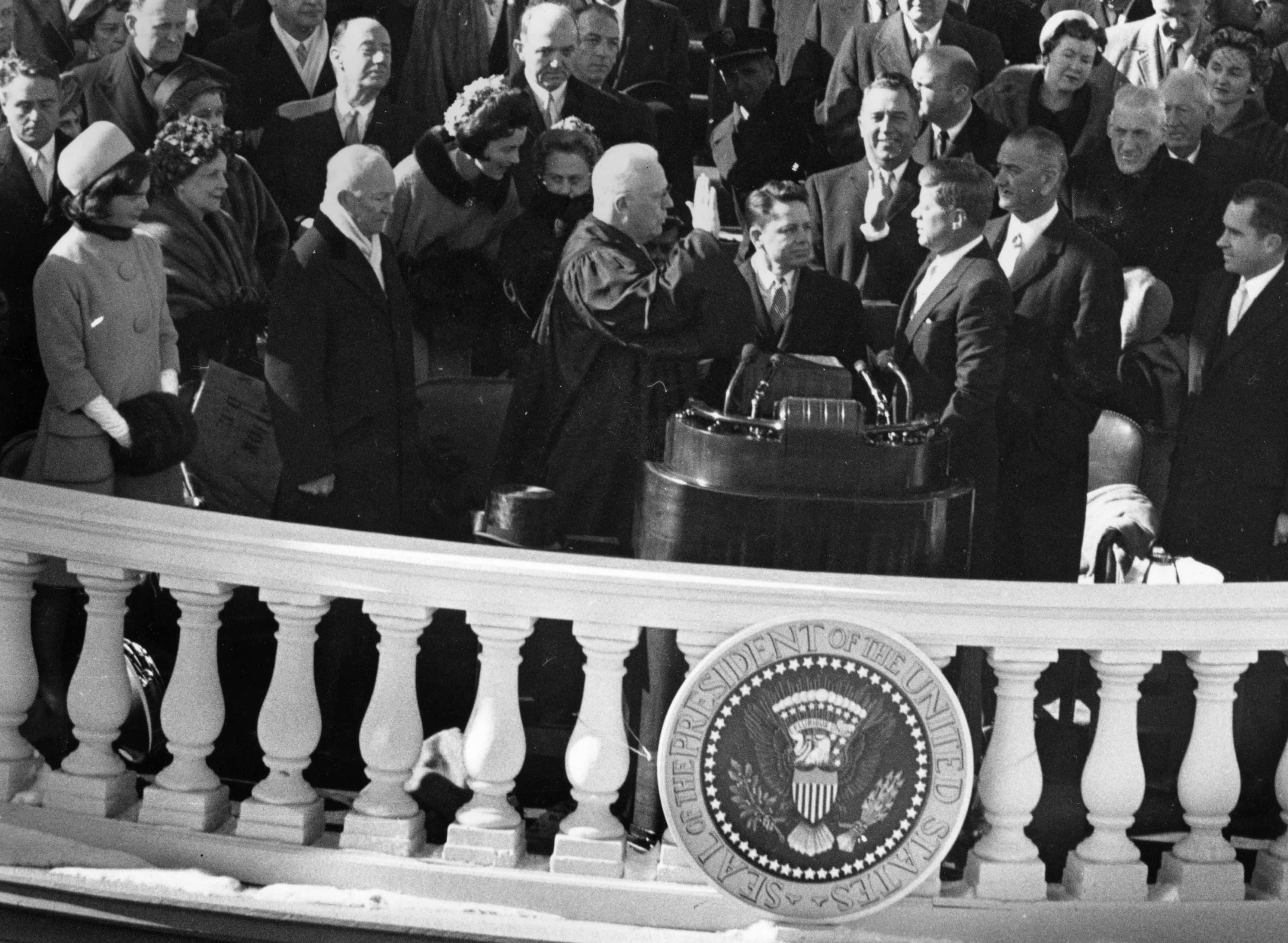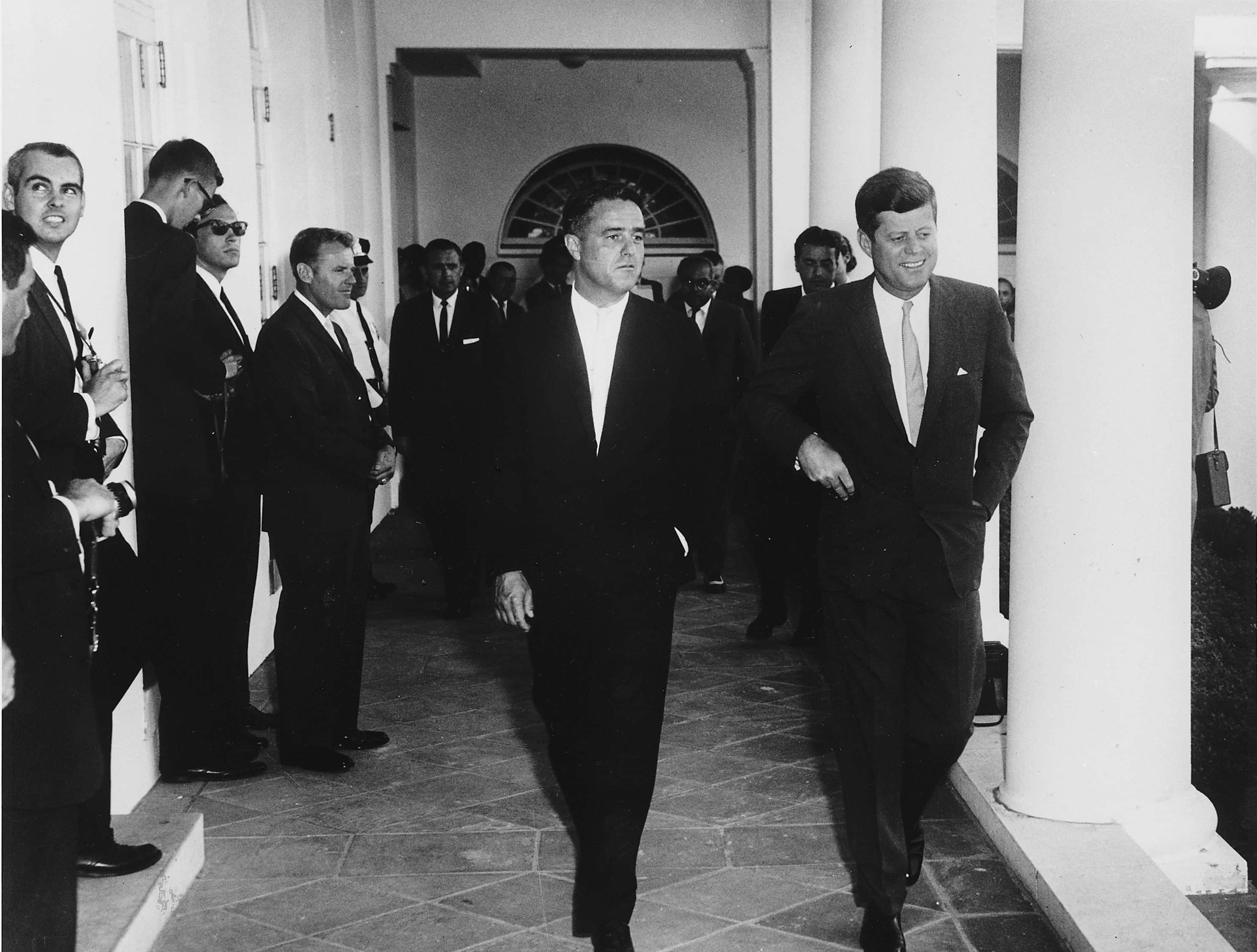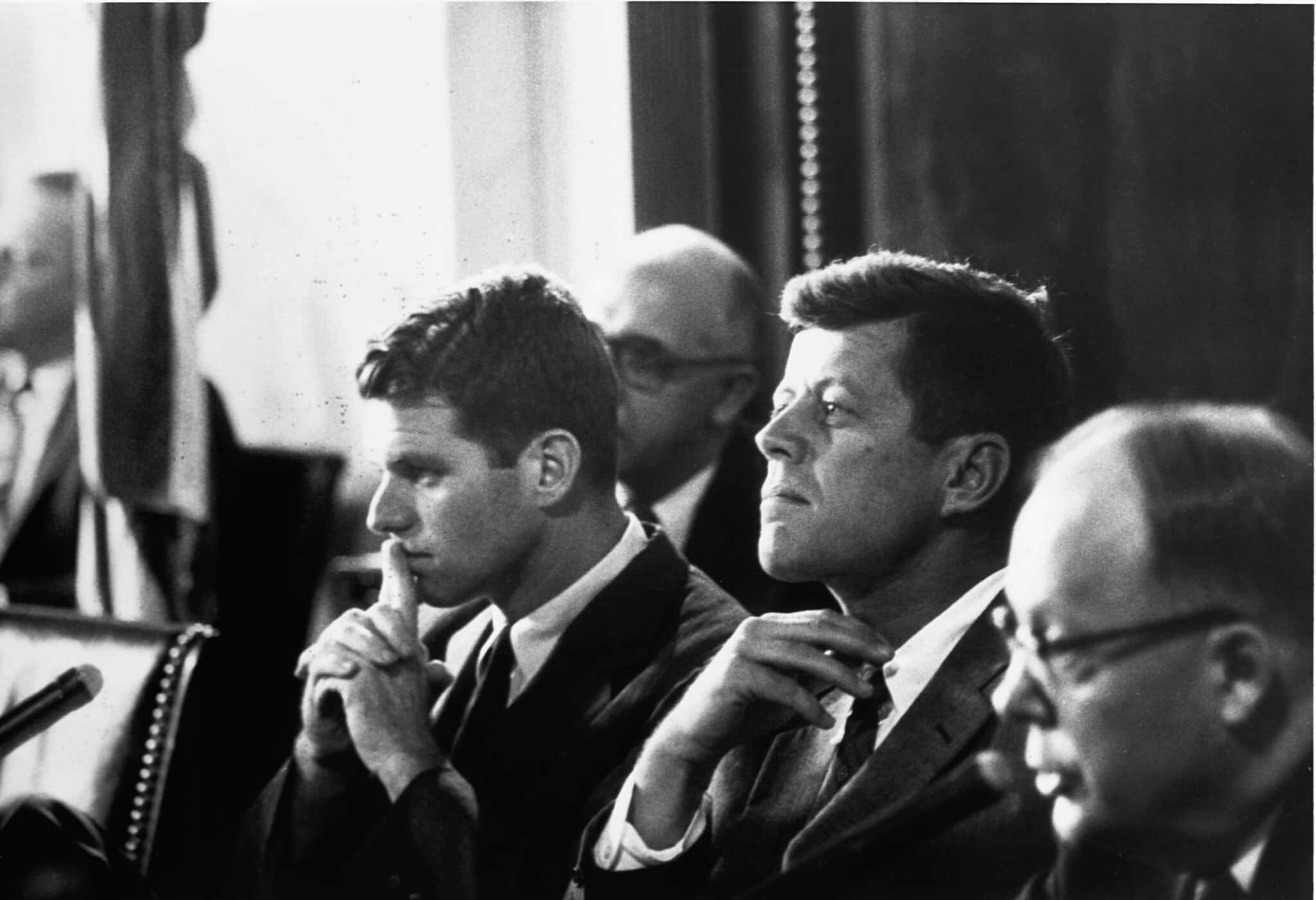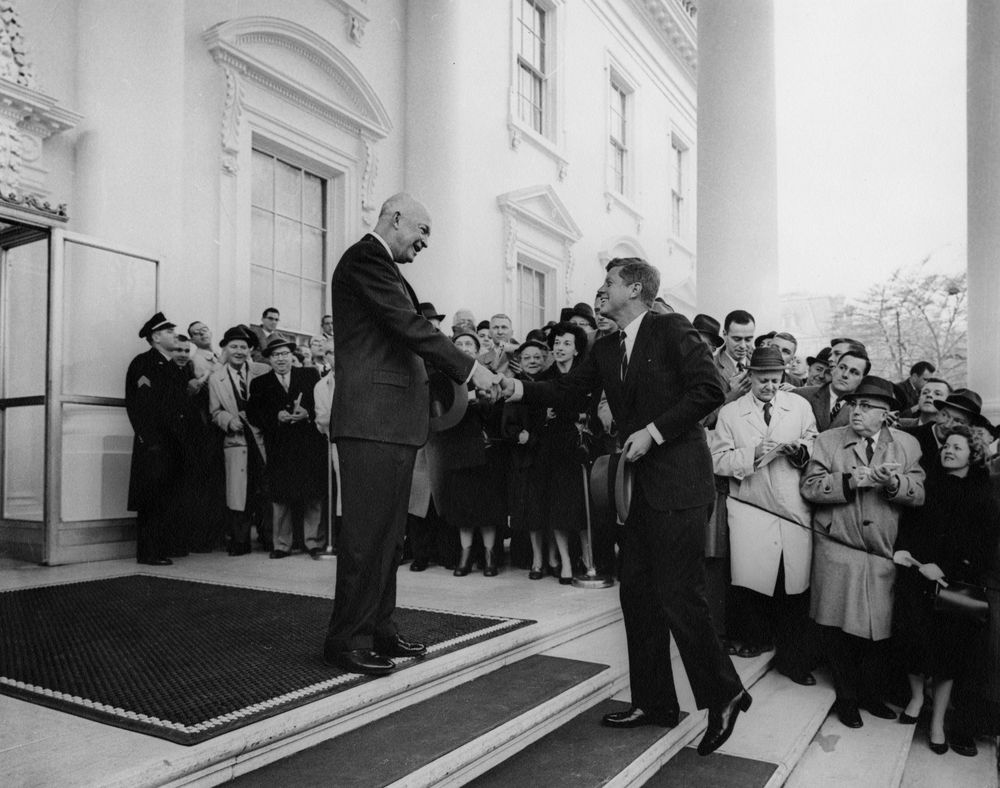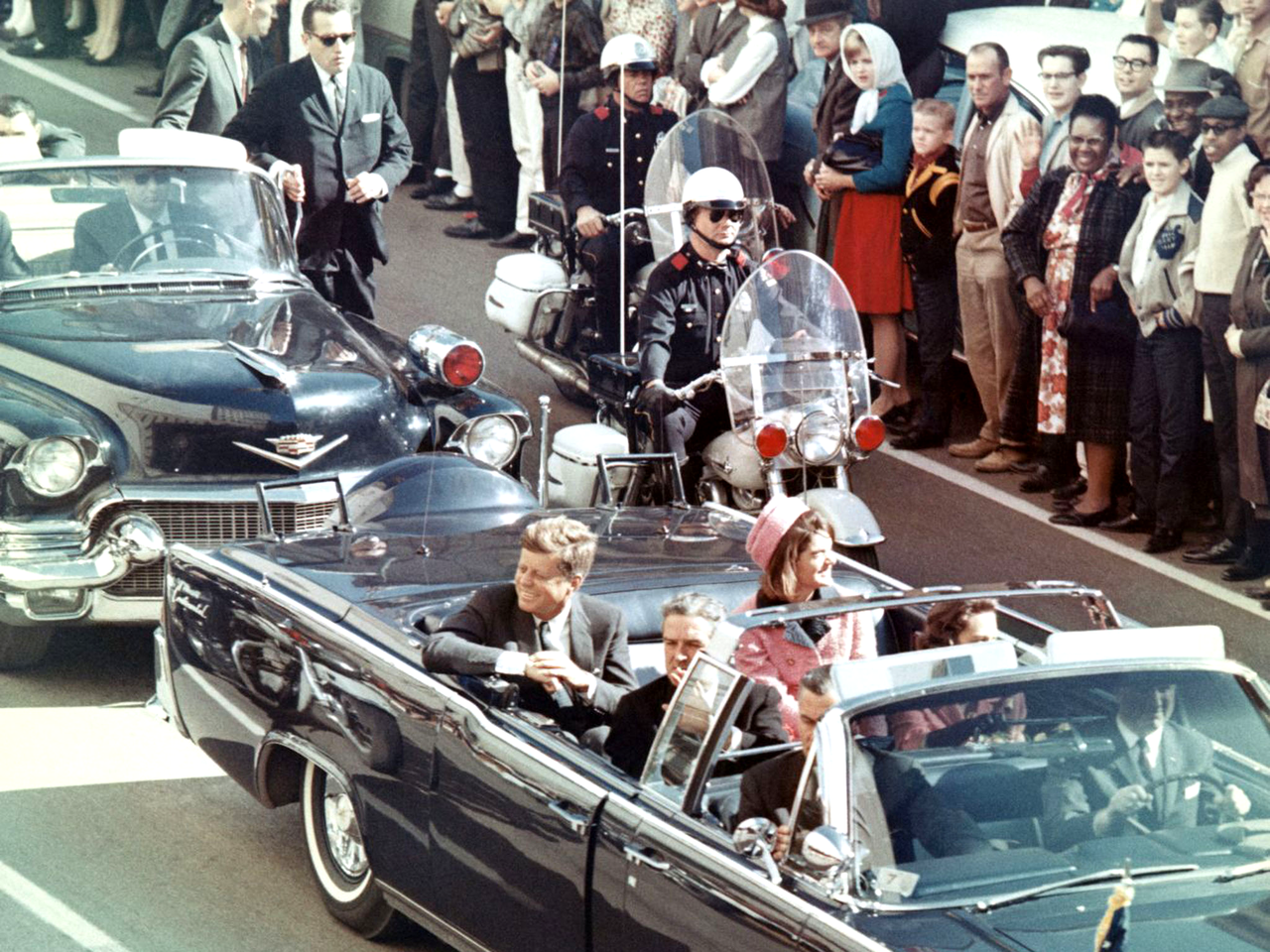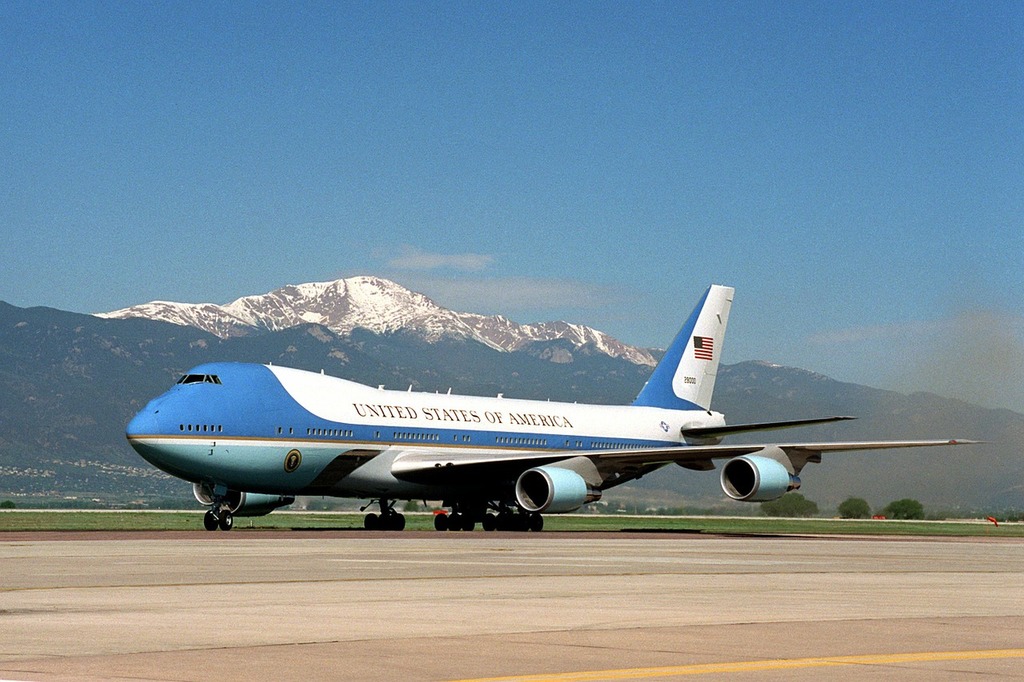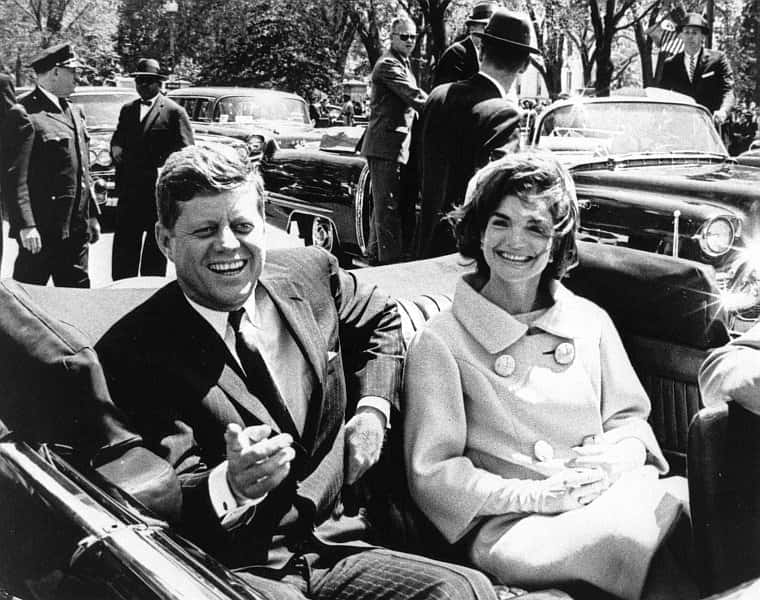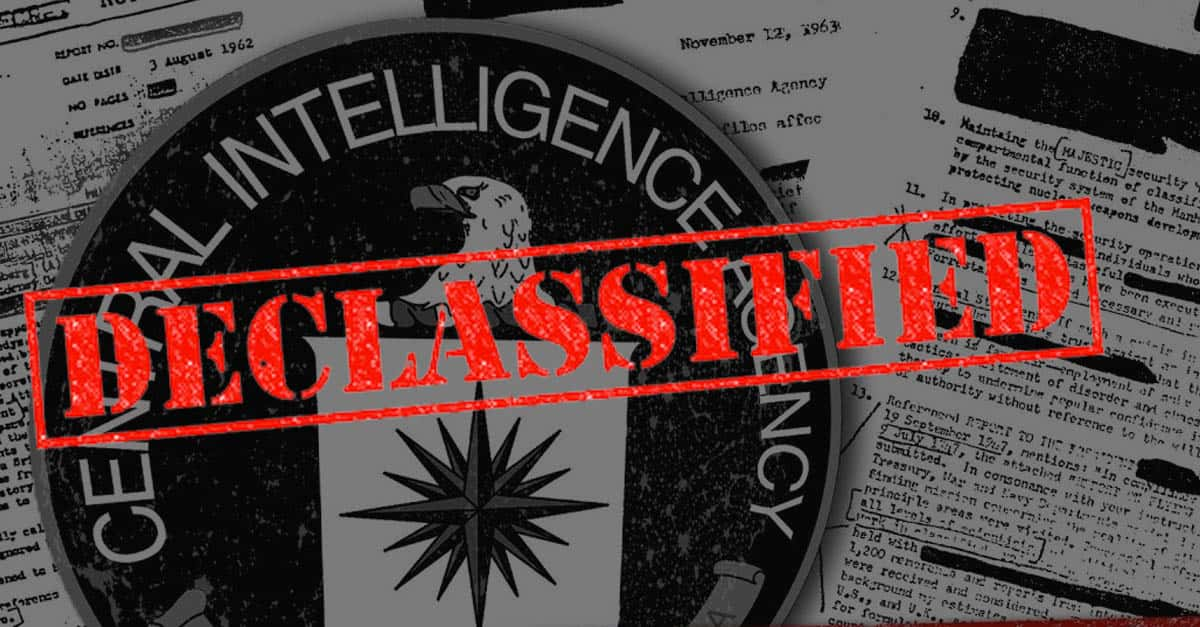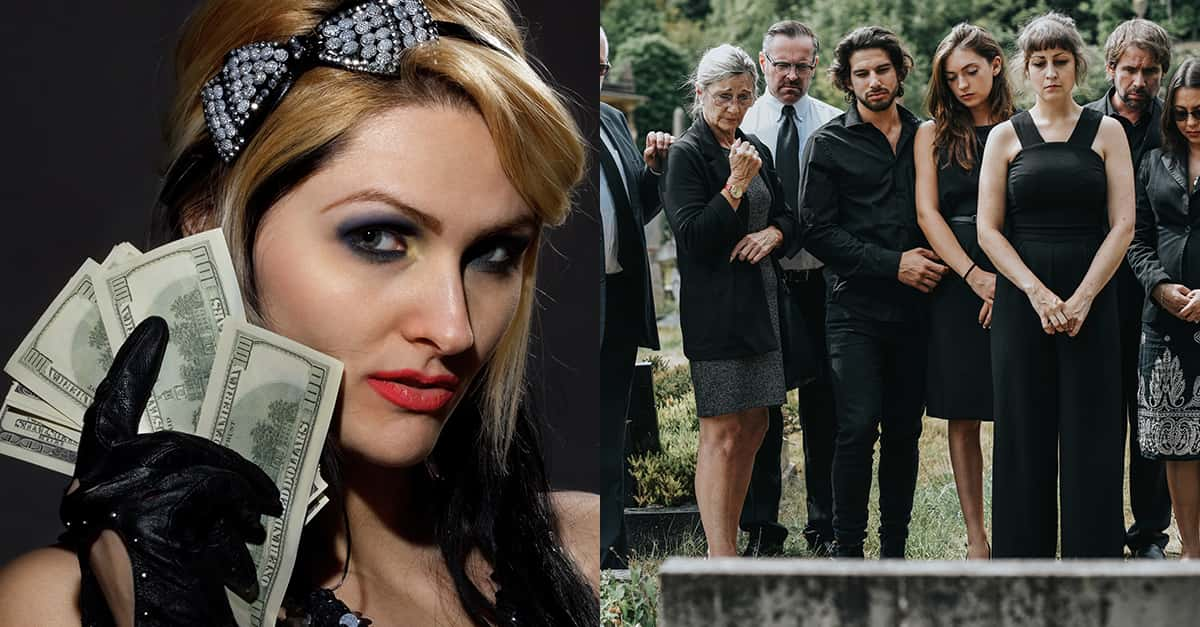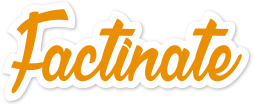02. If You Can’t Beat ‘Em…
His maternal grandfather was John “Honey Fitz” Fitzgerald, a Democratic congressman and two-term Boston mayor. His paternal grandfather was Patrick “P.J.” Kennedy, who had parlayed his whiskey importing business into a successful career in banking and politics. He and Fitzgerald were Democratic rivals in Boston who were said to be none too happy when their children married.
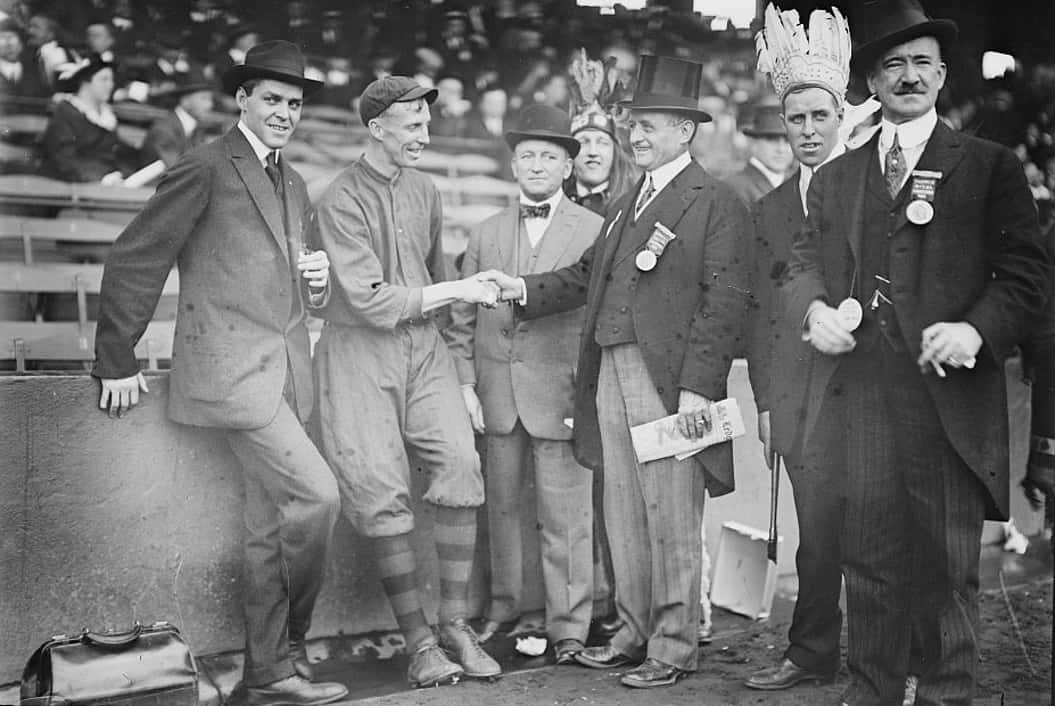 The Library of Congress, Flickr
The Library of Congress, Flickr
03. Making the Rest of Us Look Bad
Both Rose and Joseph drove their children to be the best, and it’s hard to argue with the results. His sister Eunice founded the special Olympics, his brother Robert was Attorney General and a presidential candidate, and his brother Ted served as a US senator for 47 years.
 Richard Sears, Wikimedia Commons
Richard Sears, Wikimedia Commons
04. Other Priorities
Despite being enrolled in an elite Catholic boarding school and later the prestigious Choate preparatory school in Connecticut, Kennedy was an average student at best. Though he showed flashes of brilliance when he chose to give it his best effort, he was much more concerned with sports, practical jokes, and girls.
05. Humble Beginnings
After only six weeks of studying at Princeton, Kennedy was forced to leave school due to severe gastrointestinal problems. He went to the family winter home in Palm Springs to recuperate, before ultimately being sent to work on a 40,000 acre cattle ranch in Arizona by his father. He reportedly earned $1 per day, working six days a week.
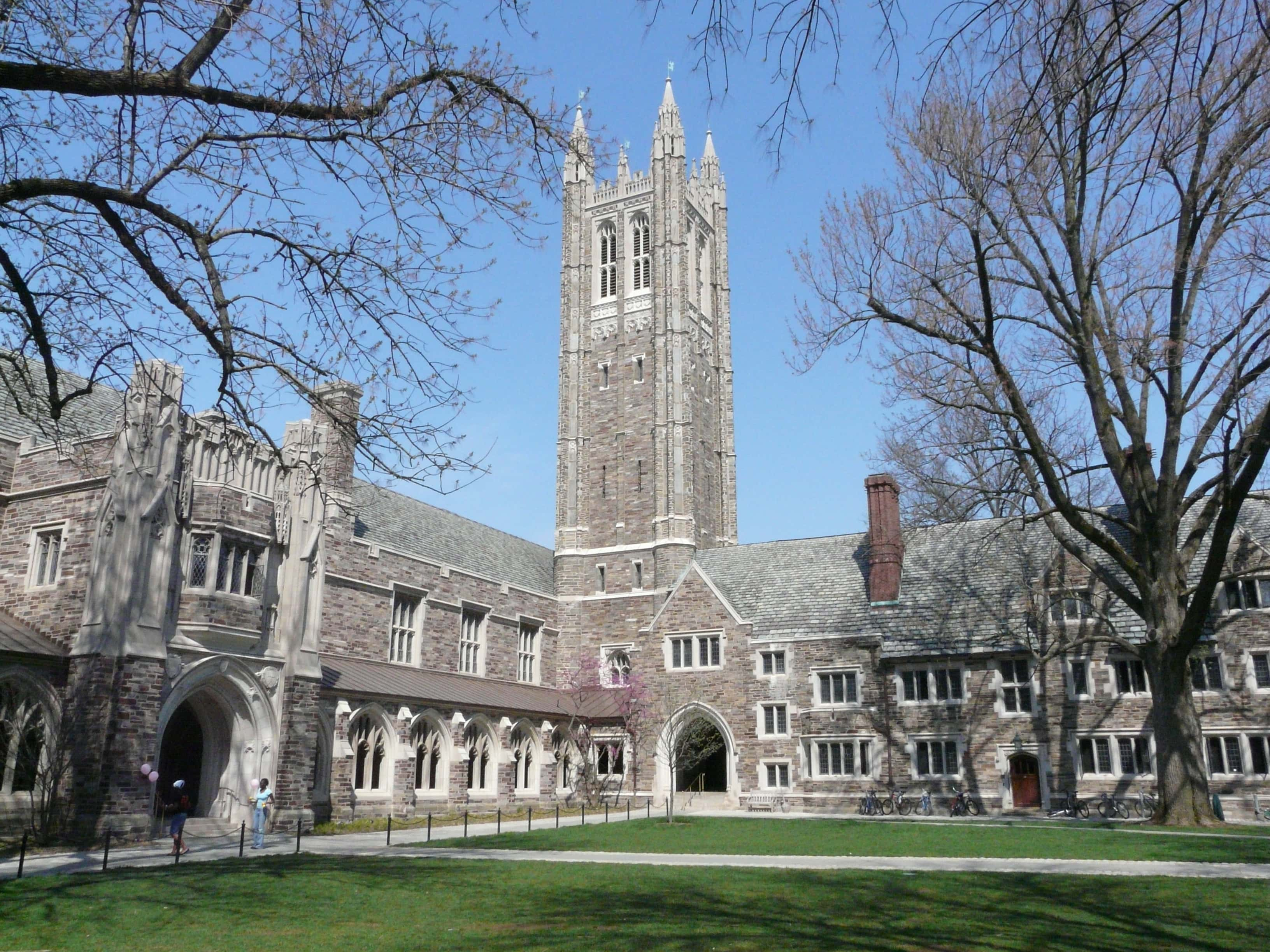 popejon2, CC BY 2.0, Wikimedia Commons
popejon2, CC BY 2.0, Wikimedia Commons
06. Best Seller
Kennedy’s senior thesis, which examined the reasons why Britain was slow to react to Hitler’s rise in power, was so well-received that it was turned into a book. After it’s publication in 1940, Why England Slept selling more than 80,000 copies and earning him $40,000 in royalties. His keen insights also earned him international accolades and praise…but only 4.1 stars on Amazon.
 Gwydion M. Williams, Flickr
Gwydion M. Williams, Flickr07. In the Navy
After graduating from Harvard, Kennedy attempted to fulfill his lifelong dream of serving his country in the military. Unfortunately, because of his chronic back pain and frequent illnesses, he was rejected by the Army on medical grounds. After his father went to work behind the scenes on JFK’s behalf, he was accepted into the Naval Reserves and commissioned as an ensign in 1941.
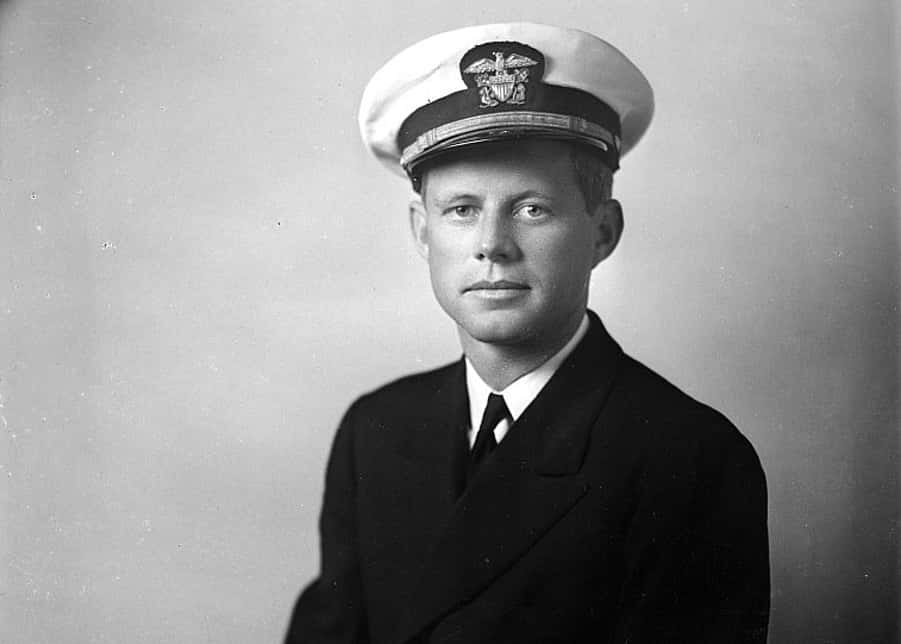 Frank Turgeon Jr., Wikimedia Commons
Frank Turgeon Jr., Wikimedia Commons
08. “P.T.” Stands for “Pretty Tough”
After being called up and promoted to lieutenant, Kennedy was assigned to the Solomon Islands, where he was given command of his own P.T. (Patrol Torpedo) boat. On the night of August 1, 1943, his boat, the P.T.-109, was cut in half by a Japanese destroyer. Kennedy led his men to a nearby island, swimming the 3½ miles with the life jacket strap of one of his men clenched between his teeth.
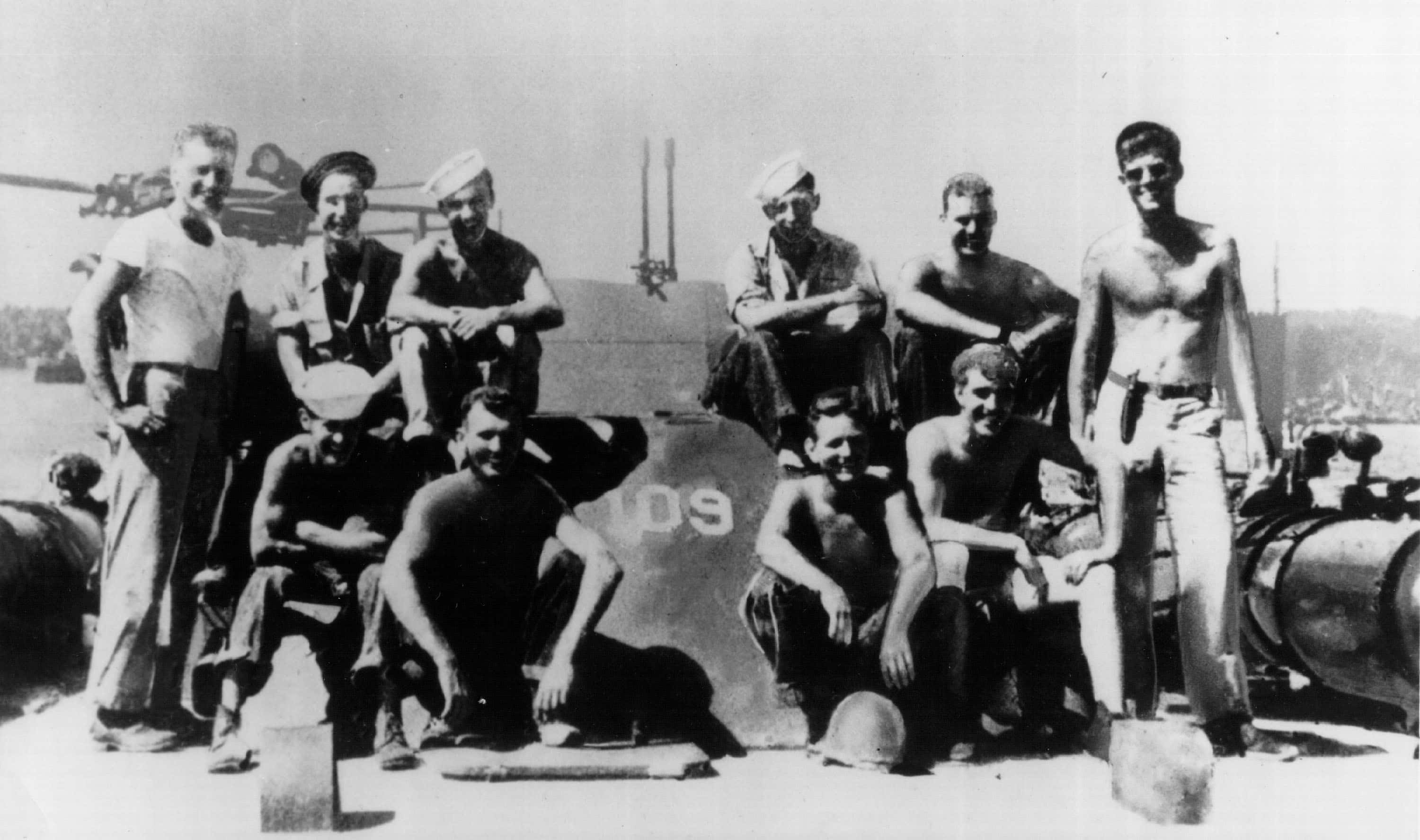 National Archives, Getty Images
National Archives, Getty Images
09. Good Origin Story
For his heroic efforts, Kennedy received the Navy and Marine Corps Medal, as well as the Purple Heart. He also injured his already troublesome back and would be in constant pain for the rest of his life. His story was later picked up by The New Yorker and Reader’s Digest and followed him into politics where it was used to showcase his appeal as a leader.
 National Archives and Records Administration, Wikimedia Commons
National Archives and Records Administration, Wikimedia Commons
10. No Such Luck for His Big Brother
JFK’s older brother Joseph Jr. was a naval aviator who was being groomed by their father for a political career and possible presidency. Those dreams came to an end in August of 1944 over the North Sea when his plane exploded in mid-air while on a top-secret mission. The political goals once meant for his brother would now fall to JFK. How’s that for pressure?

History's most fascinating stories and darkest secrets, delivered to your inbox daily.
11. Witness to History
After his discharge from the Navy, Kennedy’s father was able to use his friendship with William Randolph Hearst to get his son a job as a reporter. Kennedy reported on such seminal events as the opening of the United Nations, Churchill’s re-election, and the Potsdam conference, where Truman first told Russian leader Josef Stalin about the atomic bomb.
 National Archives and Records Administration, Wikimedia Commons
National Archives and Records Administration, Wikimedia Commons12. Mr. Kennedy Goes to Washington
With strong backing from his father, Kennedy ran for Congress in 1946. In the primary he received twice as many votes as his rival, going on to win the general election with over 73% of the vote. He was voted in the same year as fellow WWII vets Richard Nixon and Joseph McCarthy. This began his undefeated streak in elections.
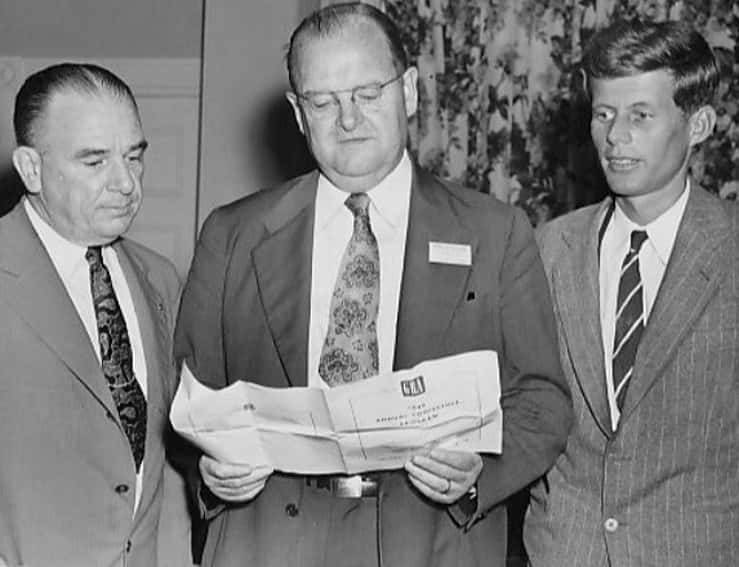 Boston Herald, Wikimedia Commons
Boston Herald, Wikimedia Commons
13. Champion of the People
In Congress, Kennedy was classic liberal. He supported higher wages, lower rents, better working conditions, and an increase in Social Security for the aged. He also supported the Truman Doctrine and the Marshall Plan as a way forward internationally after the war.
14. Better Dead Than Red
Though he wasn’t as strident as McCarthy, Kennedy was strongly anti-Communist, supporting the registration of Communists in the United States. He was also very critical of President Truman’s handling of Asia and agonized over the “Loss of China.”
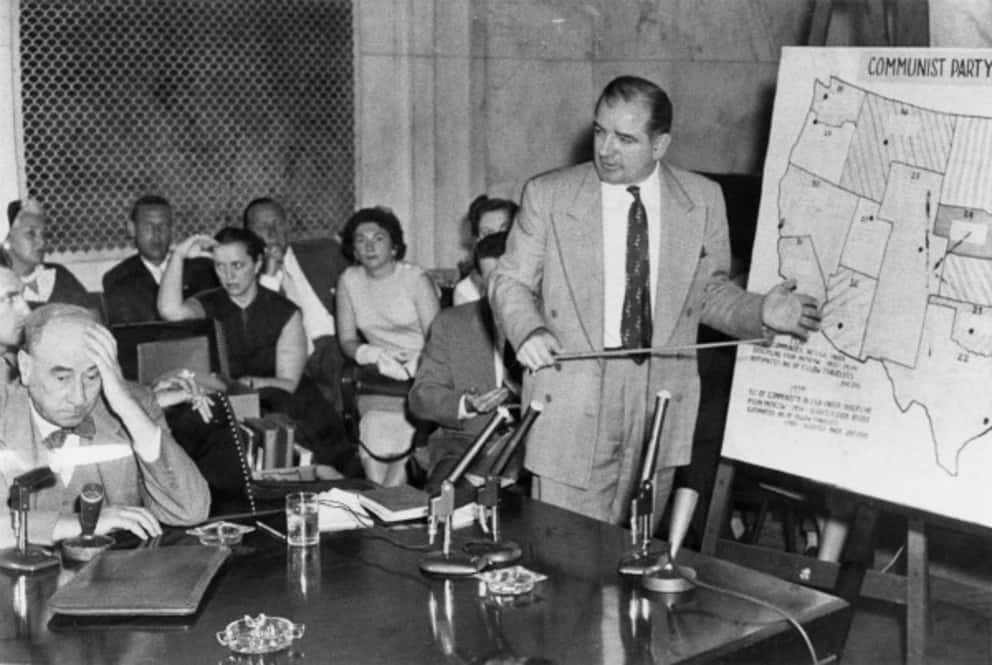 United States Senate, Wikimedia Commons
United States Senate, Wikimedia Commons
15. Thinking Ahead
Kennedy was re-elected in 1948 and 1950 in his safely Democratic Massachusetts district. But, in mapping out his future, his father had decided the House of Representatives was simply a stepping stone on his path to greater things. The next step came in 1952 when he ran for the Senate. Though the incumbent was hugely popular, Kennedy won by over 70,000 votes in a state that Republican presidential nominee, Dwight D. Eisenhower, carried by over 200,000 votes.
16. The Queen Arrives
In 1953, after being introduced at a dinner party, Kennedy married Washington Times-Herald photographer Jacqueline Bouvier. Jackie, as she was known, was the daughter of a wealthy stockbroker and a Washington socialite. She was just 23 years old at the time.
 Toni Frissell, Wikimedia Commons
Toni Frissell, Wikimedia Commons17. Lean to the Left
His time in the Senate was characterized by Kennedy building up his national name recognition and moving further and further to the left on the issues of the day. He voted against abolishing the electoral college and began to embrace the civil rights movement more and more. These, and other stances, widened his appeal to Democrats across the country.
18. The Ghost of Palm Beach
For most of 1954, Kennedy was recuperating at the family compound after undergoing major back surgery in the early part of the year. He spent this time writing his book Profiles in Courage. The book chronicled the battles of eight American politicians who defied conventional wisdom and followed their conscience. The book was awarded the Pulitzer Prize in 1957. It was ghostwritten by his assistant and speechwriter Theodore Sorensen, who would remain with him throughout his life and become one of his closest confidants.
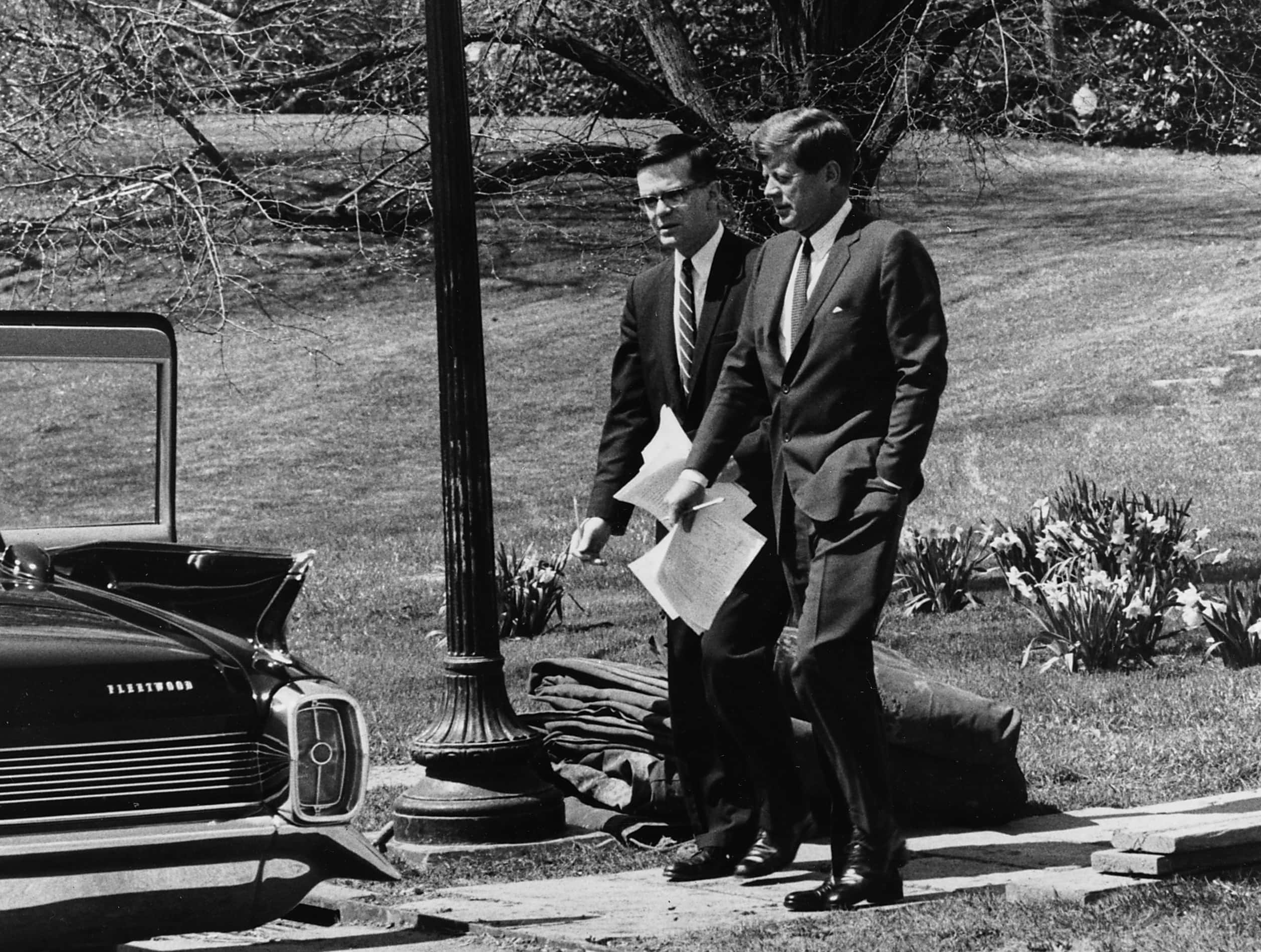 Robert LeRoy Knudsen, Wikimedia Commons
Robert LeRoy Knudsen, Wikimedia Commons
19. An Offer He Can Refuse
Leading up to the 1956 election, a certain segment of the Democratic Party thought their candidate, Adlai Stevenson, was too weak of a candidate to prevail against the incumbent, Eisenhower. Joe Kennedy secretly made a cash offer to Texas senator, Lyndon Johnson, if he would run and make JFK his running mate. Johnson politely refused.
20. Close, but no Second Fiddle
At the Democratic National Convention, Kennedy was handed the plum assignment of giving the nominating speech for Stevenson. He then openly lobbied for the job of vice president, going against his father’s wishes for one of few times in his political life. Stevenson did not want JFK, but he also didn’t want to go against the Kennedy clan. He took the rare step of throwing the question of the VP to a vote on the convention floor. In a close vote, Kennedy lost out to Senator Estes Kefauver of Tennessee on the third ballot.
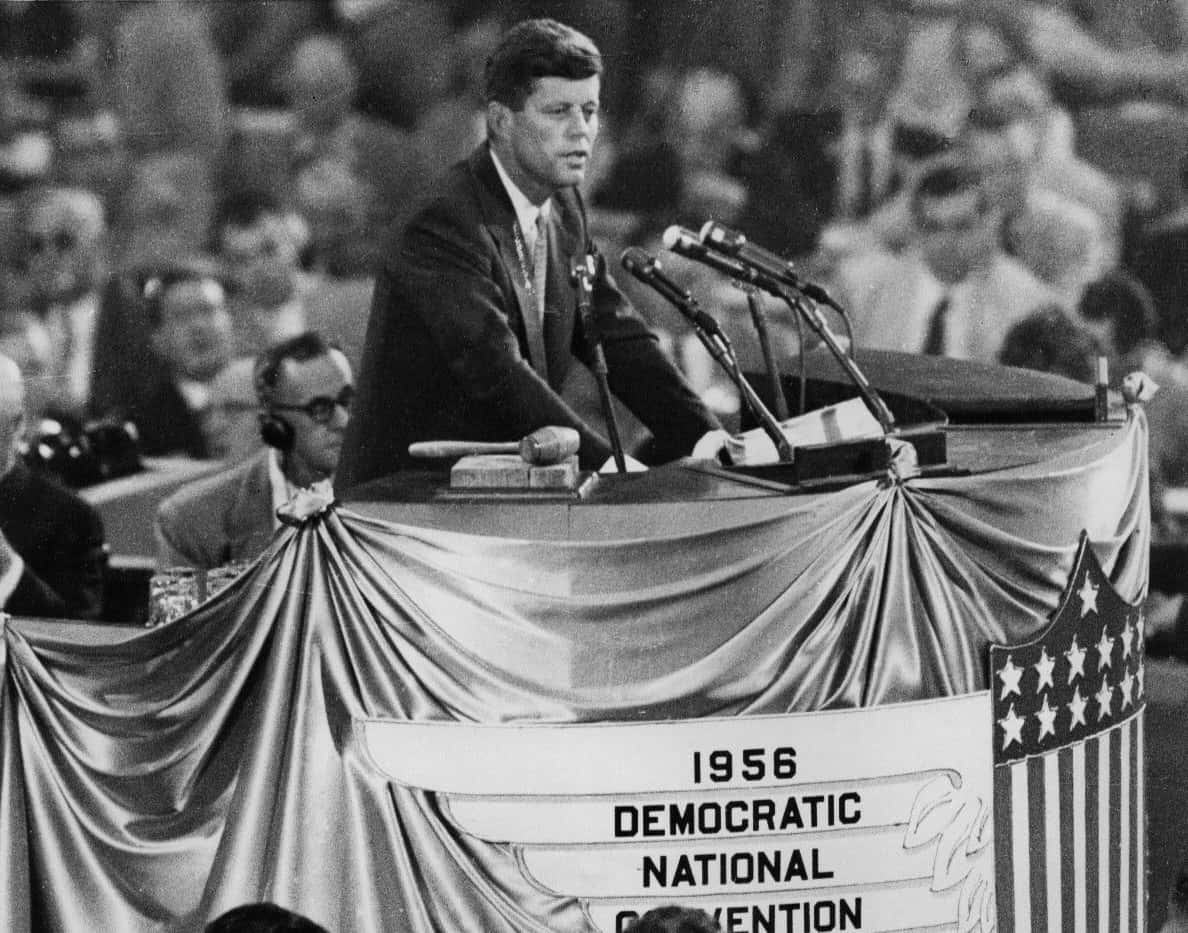 UPI-United Press International, Wikimedia Commons
UPI-United Press International, Wikimedia Commons
21. Didn’t Even Break a Sweat
JFK was re-elected to the Senate in 1958, crushing his opponent, Boston attorney Vincent Celeste, by nearly 875,000 votes. It was, at the time, the largest margin of victory in a Massachusetts’ senatorial race.
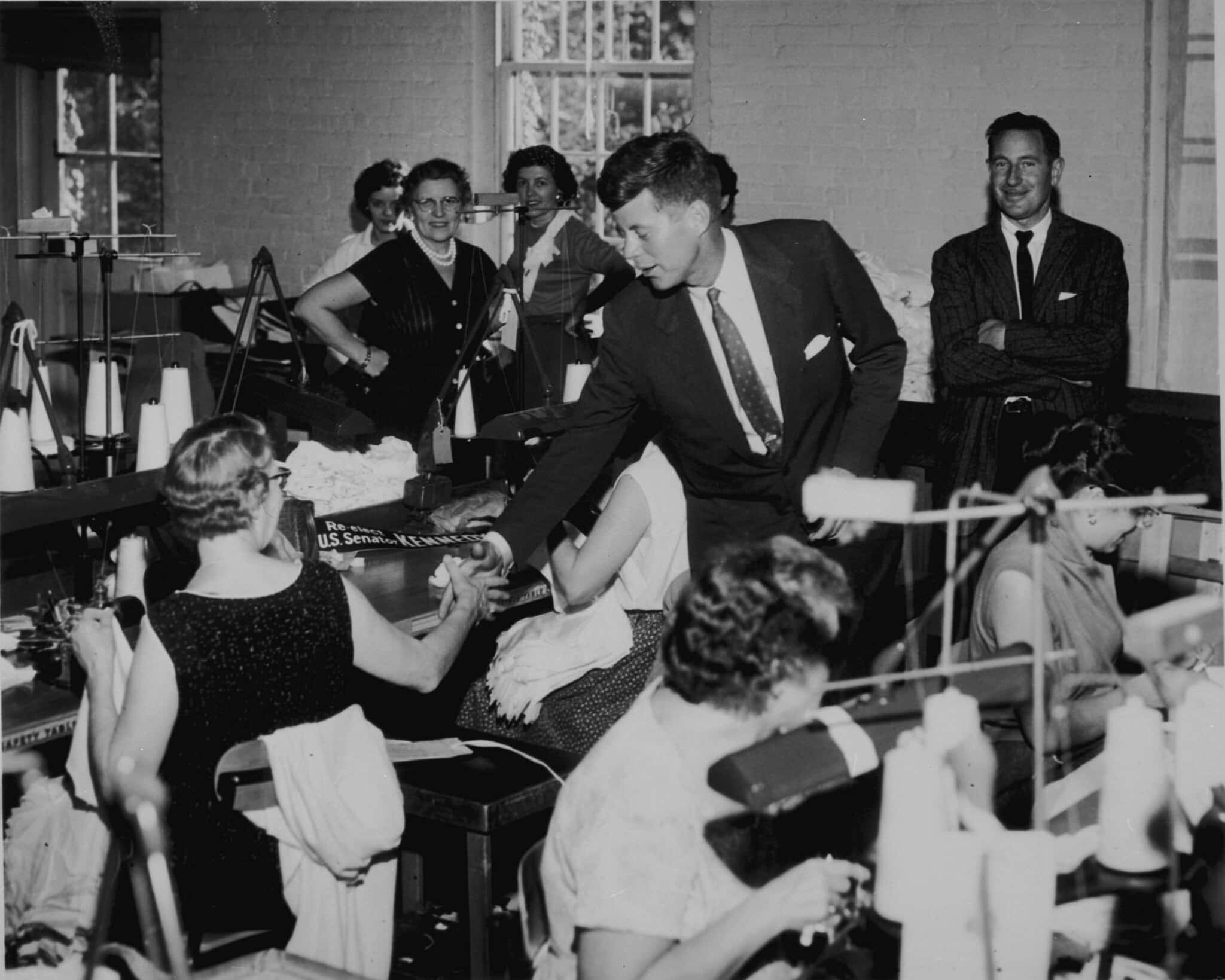 Kheel Center, Flickr
Kheel Center, Flickr22. The Goal Is in Sight
On January 2, 1960, JFK got one step closer to fulfilling the dream his father had held for him since the day his big brother Joe was killed in the war. That was the day that he officially announced himself as a candidate to be the Democratic nominee for President of the United States.
23. Worried About Rome
JFK was hoping to be just the second Catholic to receive the nomination from a major political party. People still held strong anti-Catholic biases and were worried that he would receive orders from the Pope in Rome on how to govern. Kennedy came out as a strong proponent for the separation of church and state, hoping to alleviate those fears.
24. A Field of Heavyweights
The Democratic field was crowded with many contenders with much better name recognition than JFK. Senators like majority leader Lyndon B. Johnson of Texas, Senator Hubert H. Humphrey of Minnesota, as well as previous nominee Adlai Stevenson, were all better known. JFK fought to make up the difference by taking advantage of his charisma, youth and energy.
25. Bring on Tricky Dick
As the primary season rolled on, Kennedy began to dispatch his rivals one-by-one. Even though the primaries were non-binding, he wanted to win as many states as possible to prove his ability to attract all types of voters. Despite the size of the field, it quickly came down to only Kennedy and Humphrey. After winning Humphrey’s neighboring state of Wisconsin, he all but assured himself the nomination when he won in West Virginia.
26. Master Debaters
The contest between Kennedy and California Senator, Richard Nixon, was, at the time, the longest and costliest in American history. They debated on four separate occasions, with members of the press asking each of the candidates questions. In the critical final debate, it is generally agreed that Nixon was better versed on the issues, but the charismatic Kennedy was perceived as the winner because of his youthful vigor and good looks contrasted with Nixon, who was nursing an injured leg and sported a “5 o’clock shadow.”
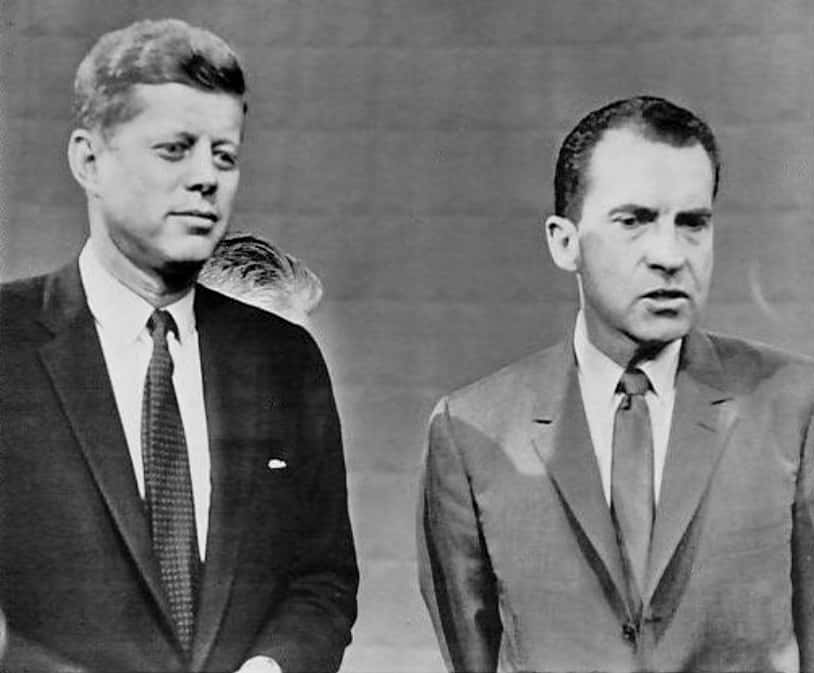 Associated Press, Wikimedia Commons
Associated Press, Wikimedia Commons27. Speaking of Close Shaves
The 1960 election was the closest in American history in over a hundred years in terms of the popular vote. Although winning the electoral college by a margin of 303-219, they were separated by only 117,00o votes nationwide.
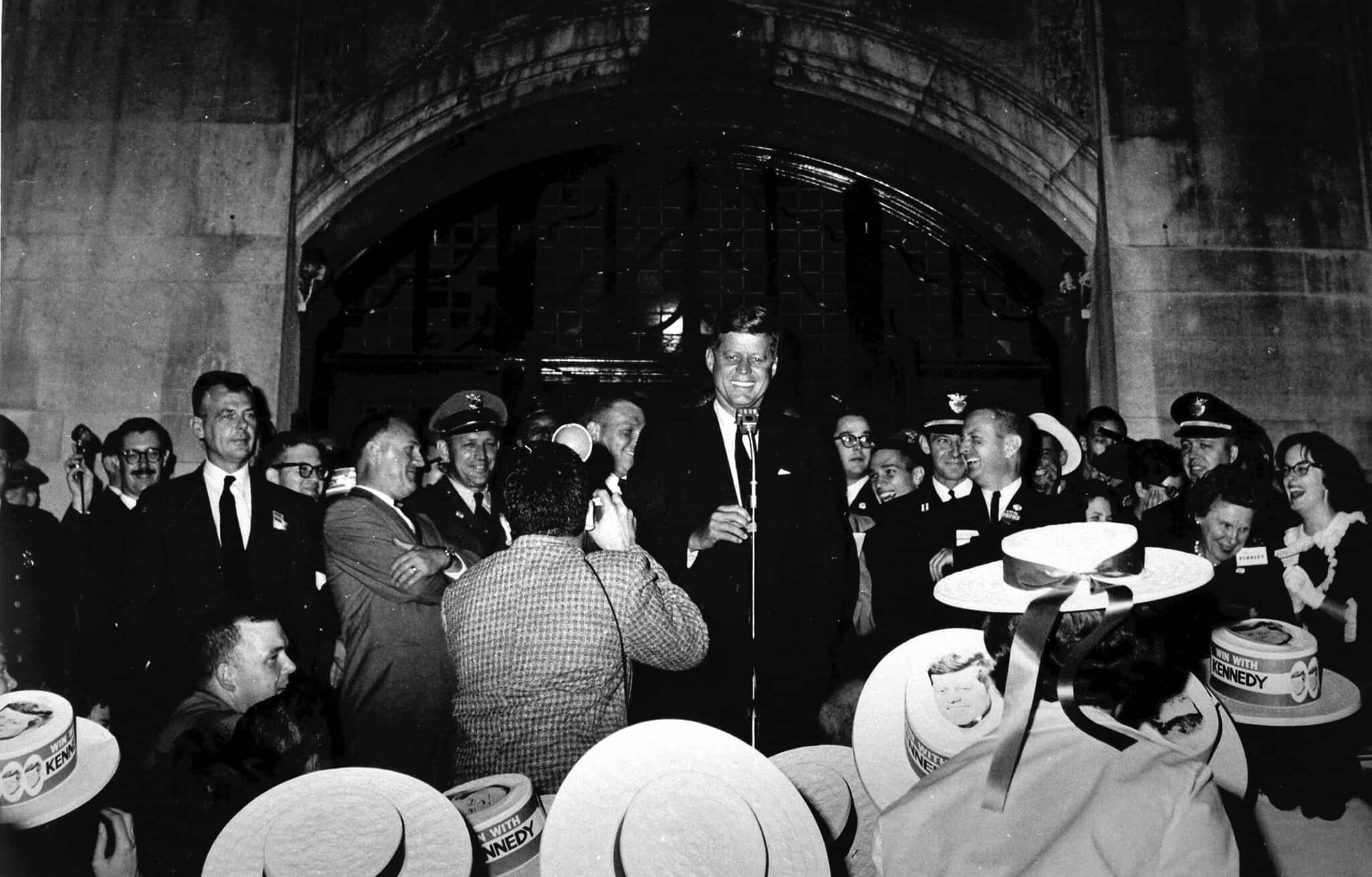 University of Michigan, Flickr
University of Michigan, Flickr
28. Just a Pup
At age 43, JFK became the youngest man ever elected president. Only Teddy Roosevelt, who assumed the presidency after William McKinley’s assassination at age 42, was younger.
29. Speech! Speech!
At his inauguration on January 20, 1961 Kennedy gave what is arguably considered to be one of the most memorable inauguration speeches. He implored his fellow citizens to “Ask not what your country can do for you; ask what you can do for your country.”
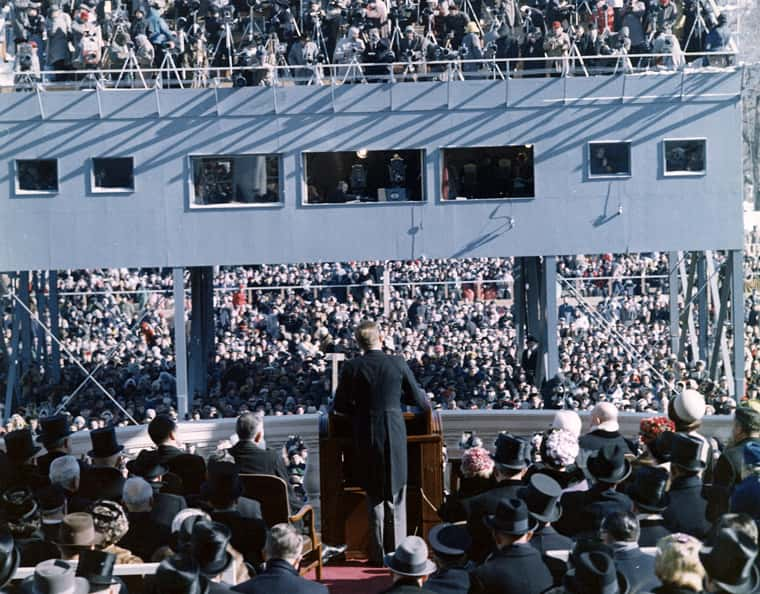 United States Army Signal Corps photograph, Wikimedia Commons
United States Army Signal Corps photograph, Wikimedia Commons
30. Someone Forgot to Mention That to Nixon
Kennedy installed a secret taping system in the Oval Office and Cabinet Room to help him when it came time to write his memoirs. It would record many historic discussions, including the tense, frank discussions during the Cuban Missile Crisis.
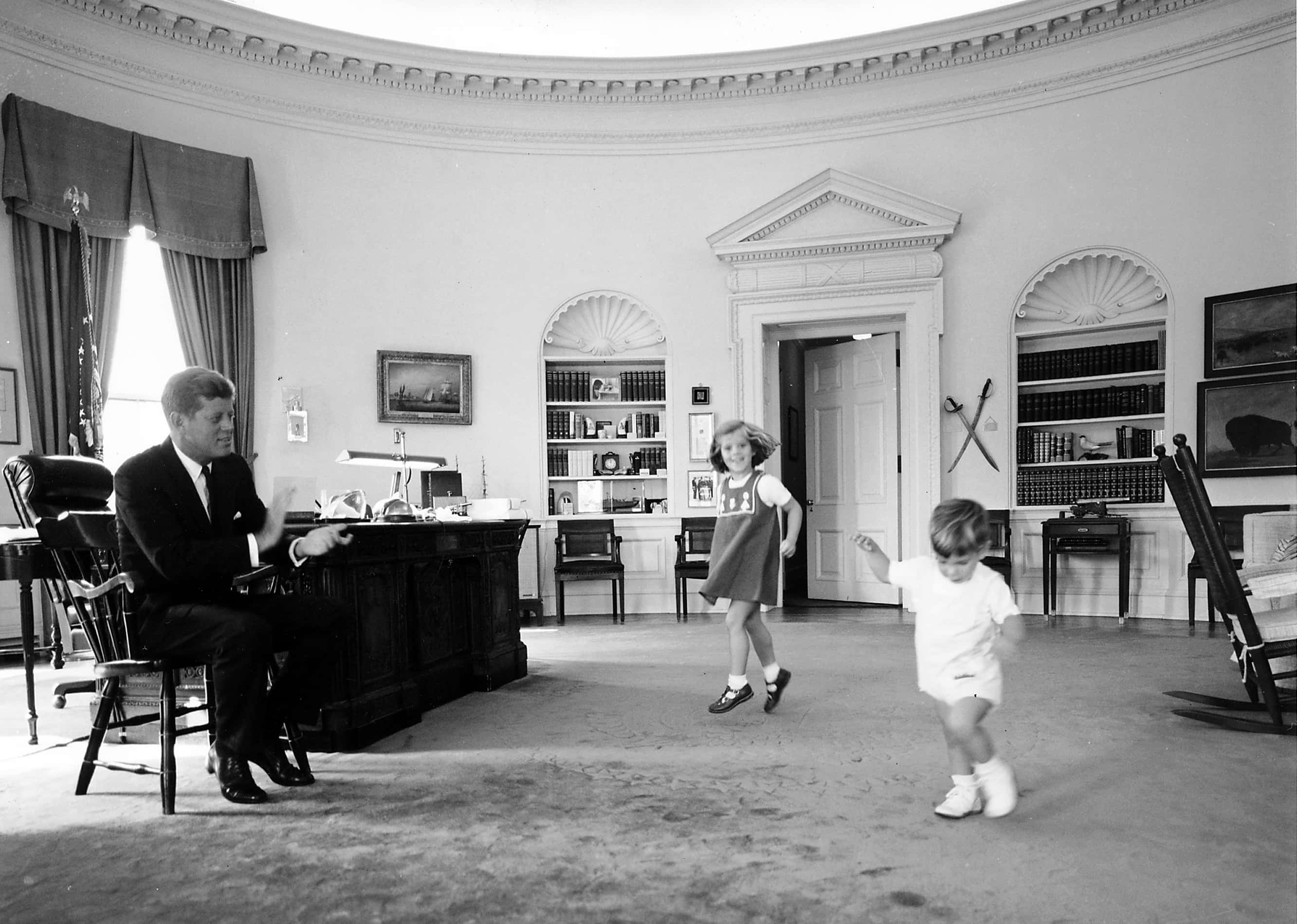 Cecil W. Stoughton, Wikimedia Commons
Cecil W. Stoughton, Wikimedia Commons
31. Joy…and Heartbreak
Despite attaining immense personal success, the Kennedy family was beset by personal tragedy. In 1956 Jackie gave birth to a stillborn girl whom the couple had intended to name Arabella. On August 7, 1963, she gave birth to a boy they named Patrick Bouvier Kennedy. The baby was born five-and-a-half weeks early and weighed under five pounds. He lived for two days before succumbing to pulmonary disease. Today, both infants are buried next to JFK and Jackie in Arlington National Cemetery.
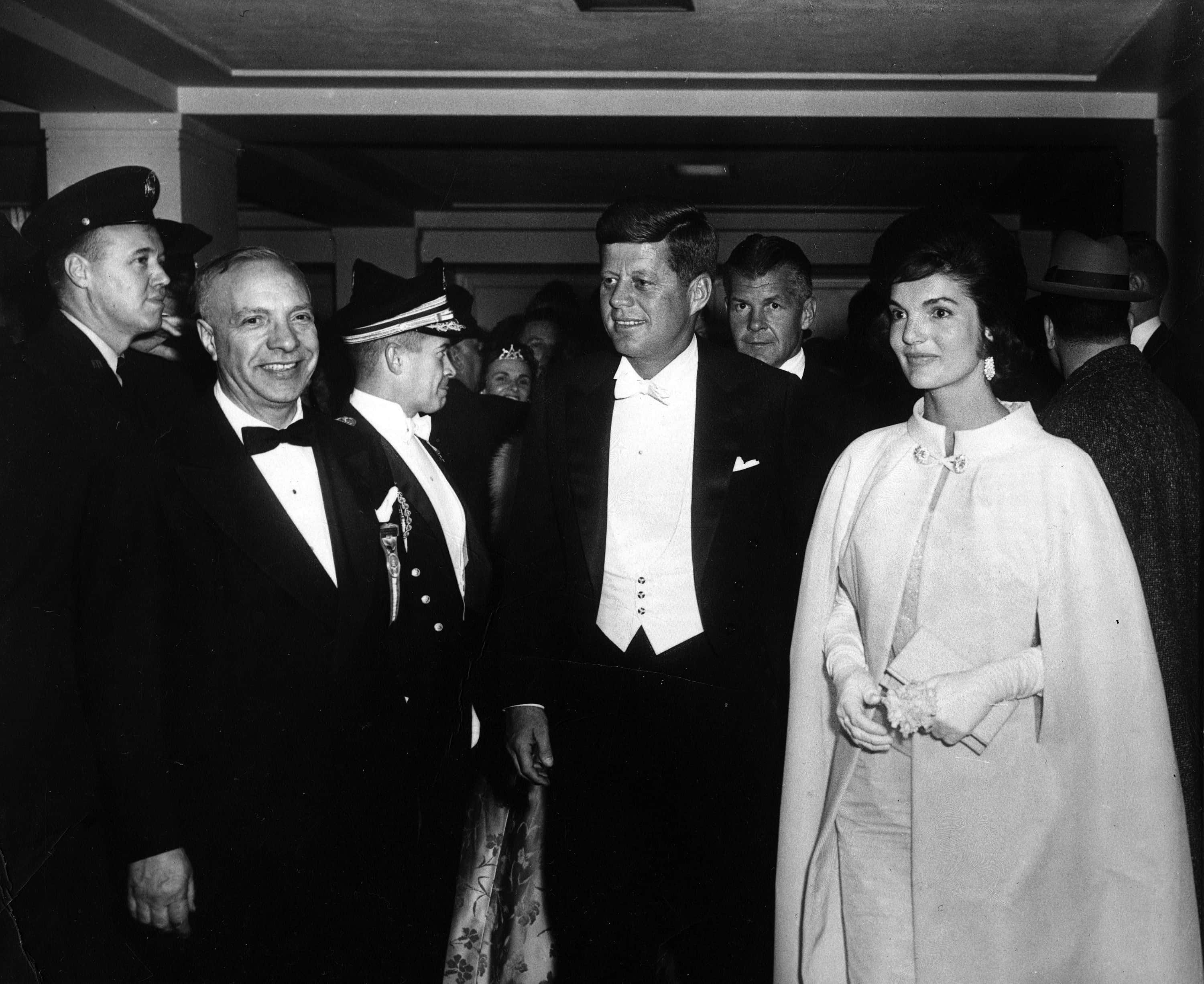 Kennedy Library Archives, Getty Images
Kennedy Library Archives, Getty Images32. The Cubans Get Smoked
After Fidel Castro overthrew the American-backed Cuban President General Fulgencio Batista, Eisenhower gave the go-ahead to the CIA in early 1960 to train 1,400 Cuban exiles to eventually lead an invasion of Cuba. The plan was handed down to JFK after he was elected. Under his sanction, the invasion took place on April 17, less than two months after he became president. The invasion failed mightily for a number of reasons. 114 of the exiles were killed and 1100 were captured.
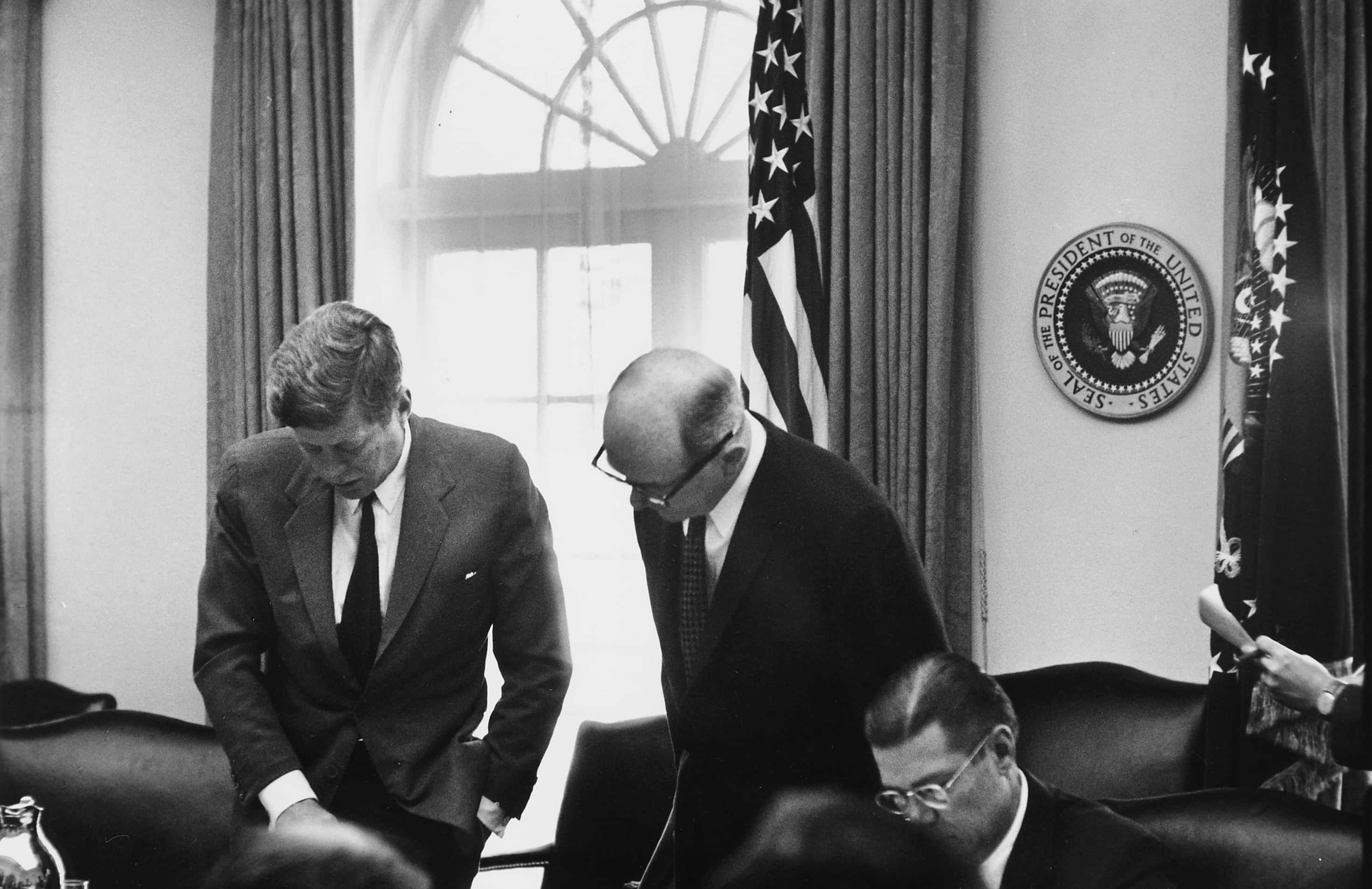 National Archives and Records Administration, Wikimedia Commons
National Archives and Records Administration, Wikimedia Commons
33. Crisis Averted…Barely
In October of 1962, after discovering Soviet Nuclear missiles in Cuba, Kennedy called for naval blockade around the island nation. For 13 days the world held its breath as the two countries stared each other down. The crisis ended when the Soviets agreed to remove their missiles in exchange for a promise from Kennedy not to invade Cuba. Kennedy also secretly agreed to remove nuclear missiles from Turkey.
 Robert LeRoy Knudsen, Wikimedia Commons
Robert LeRoy Knudsen, Wikimedia Commons
34. Peace, Man
In one of his first acts as president, Kennedy created the Peace Corps and named his brother-in-law, R. Sargent Shriver, as its first director. Since 1961, over 200,000 Americans have joined, helping efforts in underdeveloped countries to fight famine and disease.
35. He’s Got Jokes
After winning the election, Kennedy appointed his brother Robert to the position of Attorney General. He was widely criticized for the pick because “Bobby” had no experience in any state or federal court. This caused JFK to joke, “I don’t see what’s wrong with giving him a little legal experience before he goes out to practice law.”
36. Civil Rights
Making good on his bold campaign promises about civil rights, he directed his brother in litigating 57 voting rights cases, ending segregation in interstate transportation, and integrating over 1100 school districts.
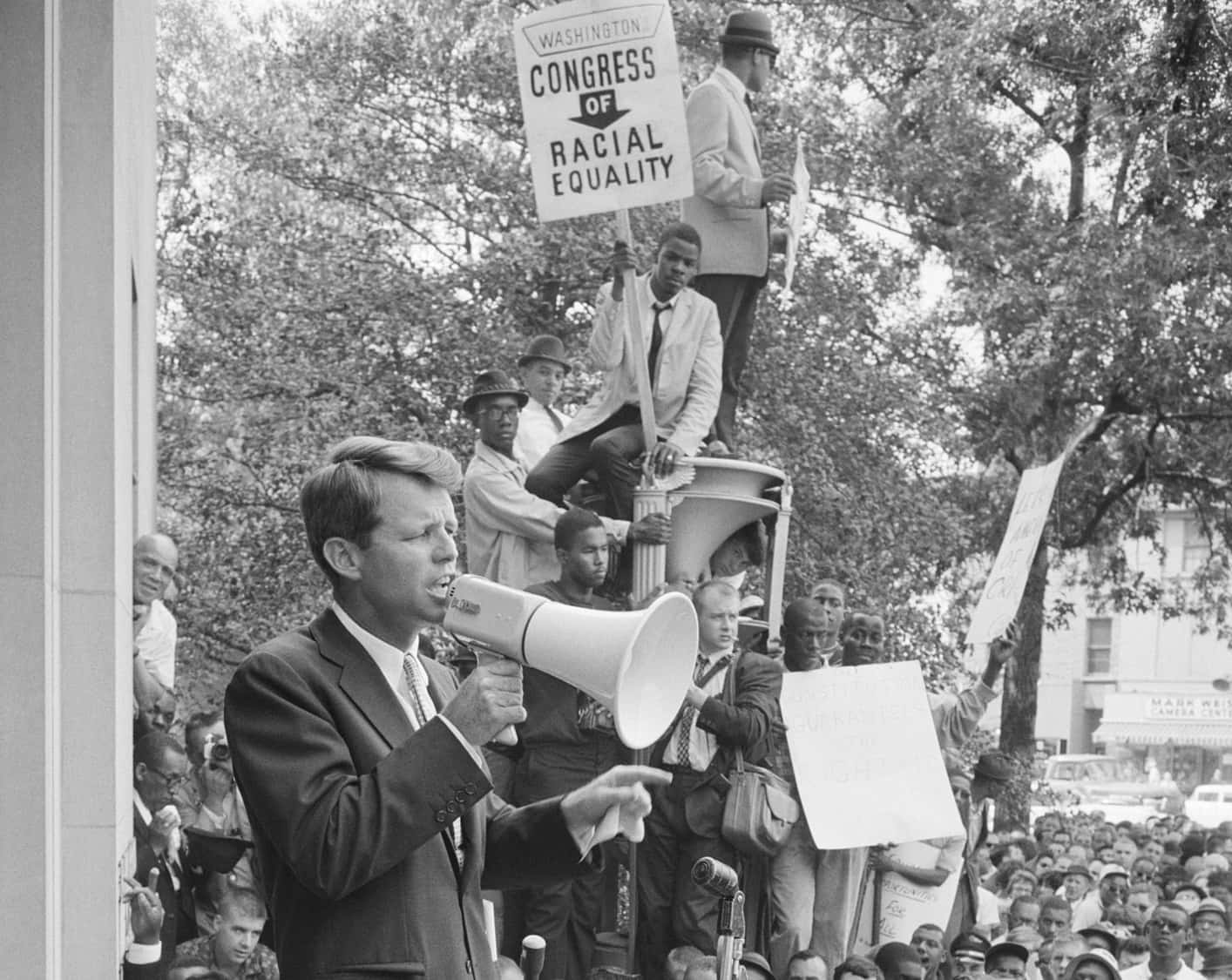 Abbie Rowe, Wikimedia Commons
Abbie Rowe, Wikimedia Commons37. The Match is Lit
Kennedy continued the U.S. policy of supporting the government of South Vietnam against the communist North. He increased the number of advisors from 900 during the Eisenhower administration to 16,000 in 1963.
38. Trouble in Texas
JFK scheduled his trip to Texas in September of 1963 to play peacemaker in a Democratic Party struggle between the liberal and conservative wings of the party within the state. His 10 mile motorcade route from Love Field to the Trade Mart was finalized in early November and widely reported in the Dallas newspapers several days before his trip.
39. Disaster in Dallas
When the motorcade was only five minutes from their destination, shots rang out as they passed Dealey Plaza on Elm Street. Kennedy was struck twice, including a catastrophic hit to the head which was later determined to be the fatal wound. He was rushed to Park Lane Hospital where he was pronounced dead at 1pm CST. Vice President Johnson was sworn in aboard Air Force One just 90 minutes later.
 Cecil W. Stoughton, Wikimedia Commons
Cecil W. Stoughton, Wikimedia Commons
40. Body Battle
Members of Kennedy’s security detail had a physical altercation with Texas officials, including Dallas County Coroner Earl Rose. Rose believed he had a legal obligation under Texas state law to perform an autopsy. Surprisingly, at the time, killing the president was not a federal crime. Despite it being only a state crime, the agents prevailed, and the body was taken to Air Force One for the flight back to Washington DC.
41. Quick Capture
After being identified by a bystander who had seen him standing in the same sixth floor window of the Texas Schoolbook Depository where the shots came from, Dallas police arrested Lee Harvey Oswald. Oswald was found hiding out in a nearby movie theater after killing Officer J.D. Tippet., who had spotted Oswald and confronted him.
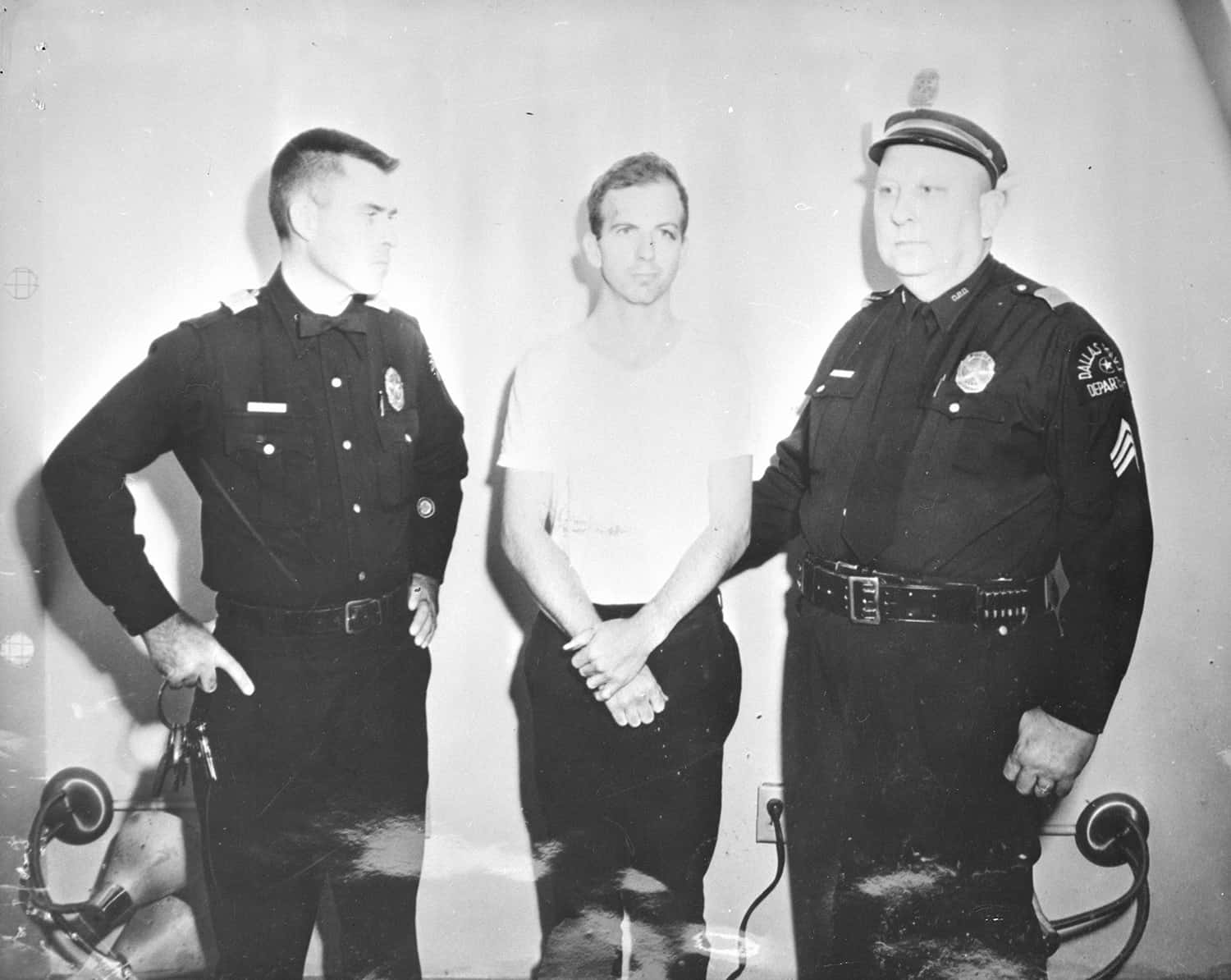 The U.S. National Archives and Records Administration, Wikimedia Commons
The U.S. National Archives and Records Administration, Wikimedia Commons42. Eerie Timing
Two days later, after being charged with the murder of Officer Tippet and President Kennedy, Oswald was slated to be transferred from the city jail to the county jail. As he was being escorted to a waiting car in the jail’s garage, Oswald was shot by Dallas strip club owner Jack Ruby. He was shot at 11:21am and was rushed to the same hospital where JFK had gone just two days earlier. He was pronounced dead at 1:07pm, exactly 48 hours and seven minutes after Kennedy had died.
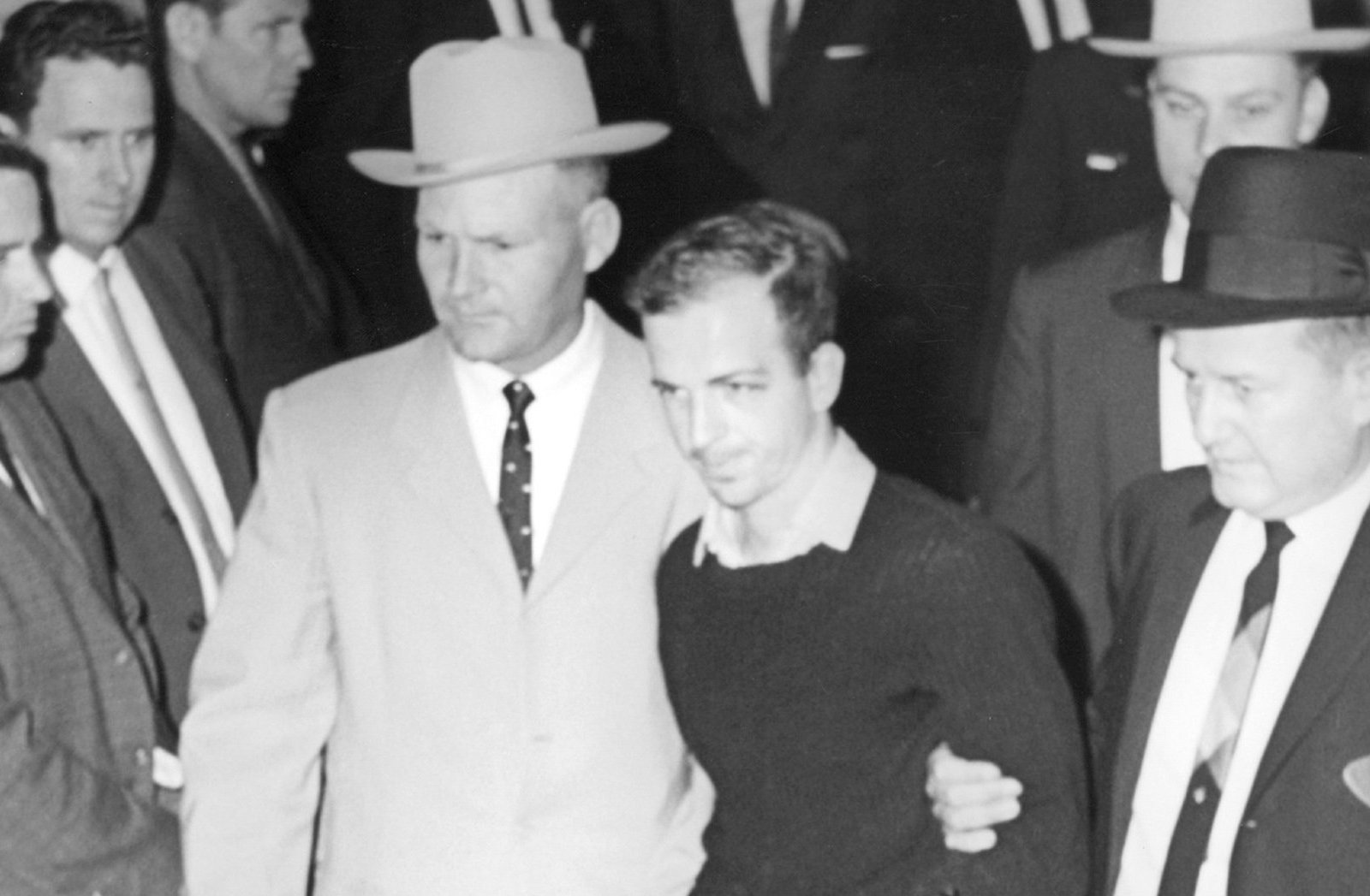 Ira Jefferson, Wikimedia Commons
Ira Jefferson, Wikimedia Commons
43. A Grief-Stricken Nation Mourns
Before the funeral, Kennedy’s body lay in state inside the Capitol rotunda for a public viewing. Over the period of 18 hours, more than 250,000 people waited for up to ten hours in a line that stretched 40 blocks for a chance to pay their respects.
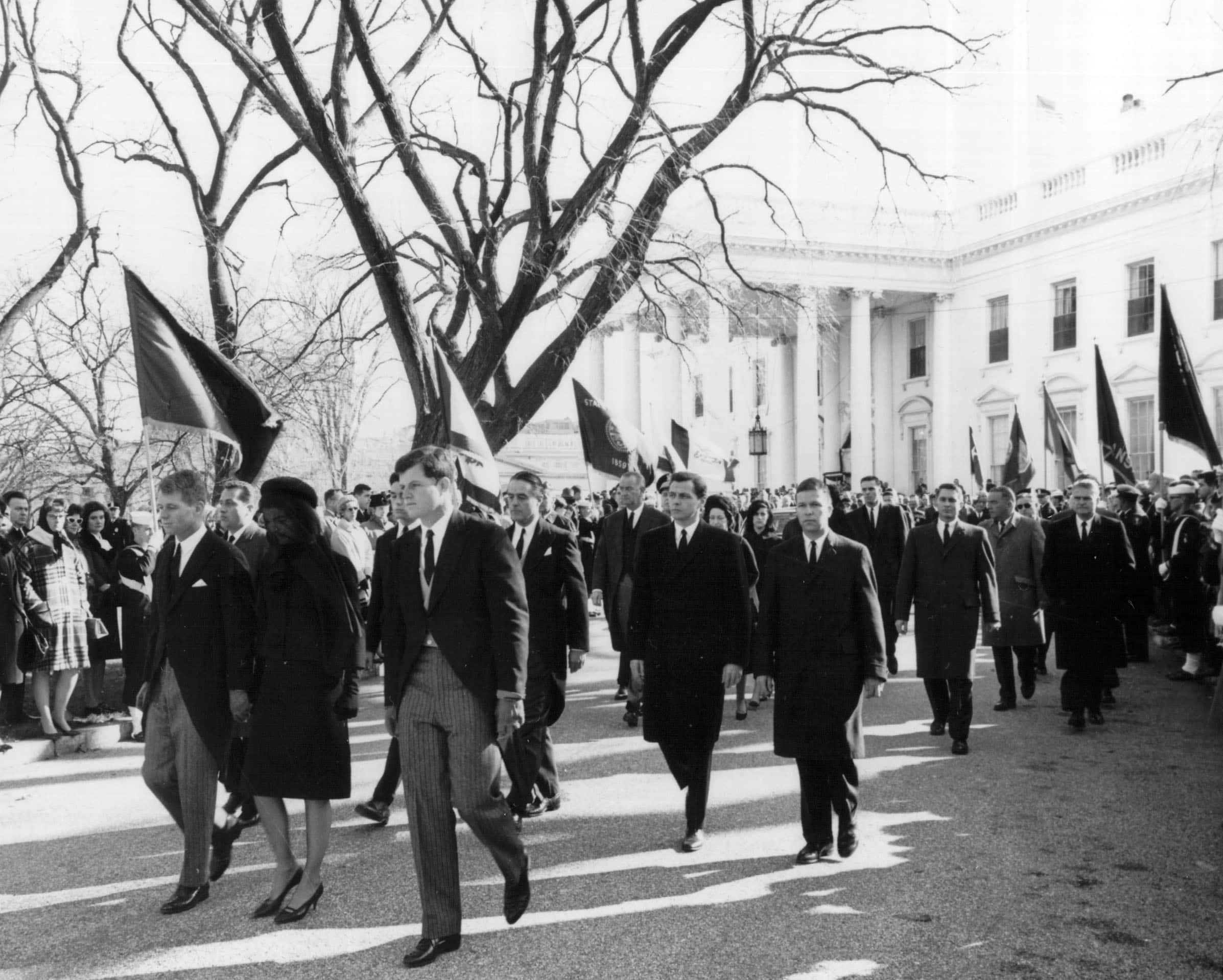 National Archives, Getty Images
National Archives, Getty Images
44. Coconut John
While serving as a commander in the US Navy, JFK saved the lives of his stranded crew by carving an SOS message into a coconut. As president, he kept that coconut on his desk as a paperweight.
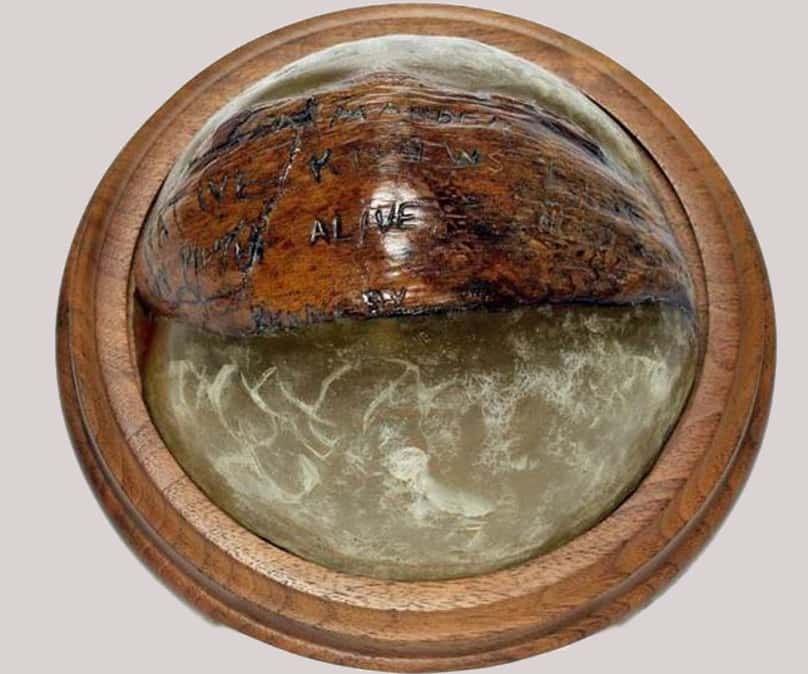 jfklibrary.org, Wikimedia Commons
jfklibrary.org, Wikimedia Commons
45. Final Moments
John F. Kennedy's final words, spoken moments before the first bullet pierced his neck, were "No, you certainly can't." He was responding to Nellie Connally, the First Lady of Texas, who had just told him "Mr. President, you can't say Dallas doesn't love you."
Source: 1, 2, 3, 4, 5, 6, 7, 8, 9, 10, 11, 12, 13, 14, 15, 16, 17, 18, 19, 20, 21, 22, 23, 24, 25, 26, 27

